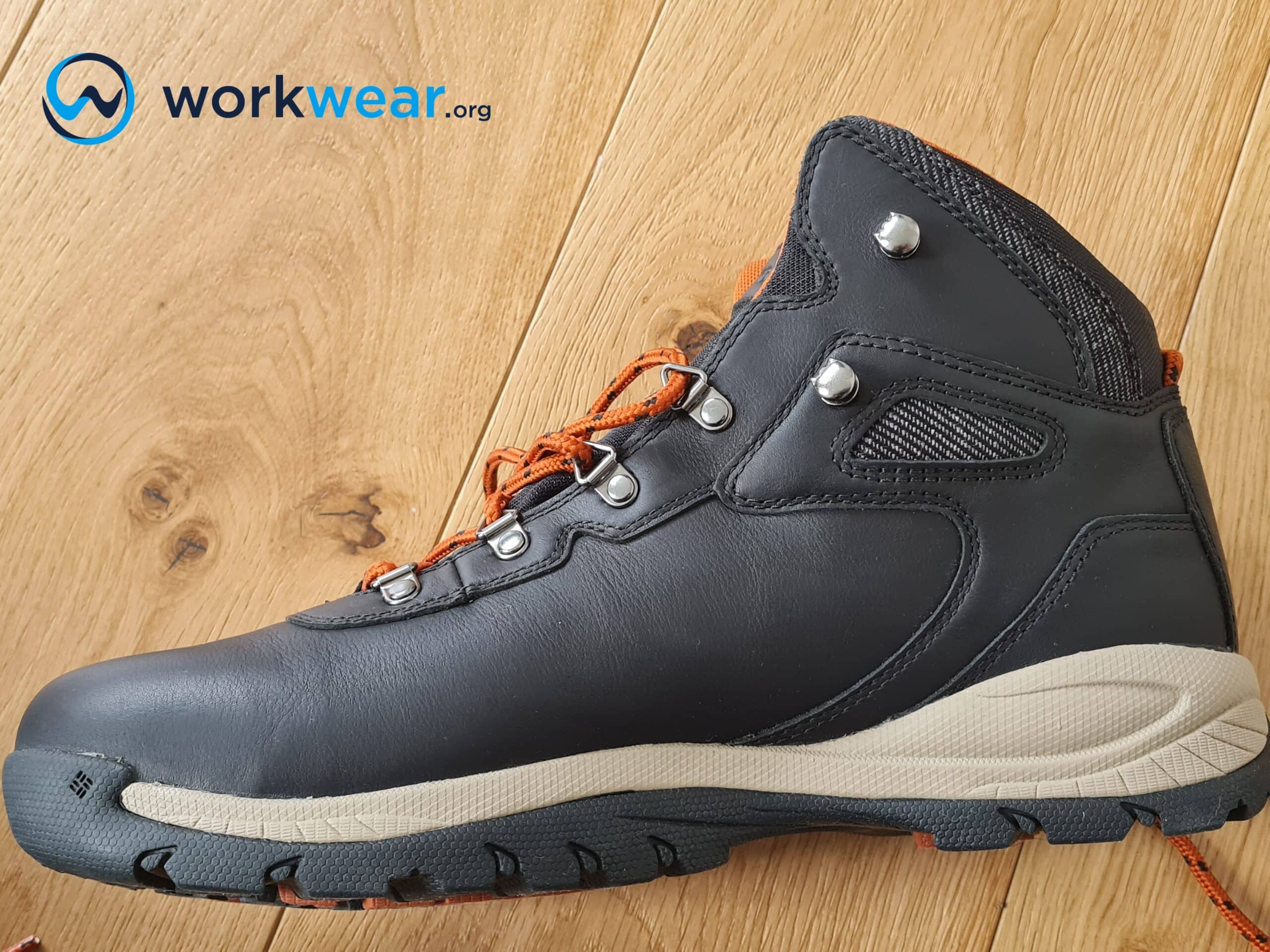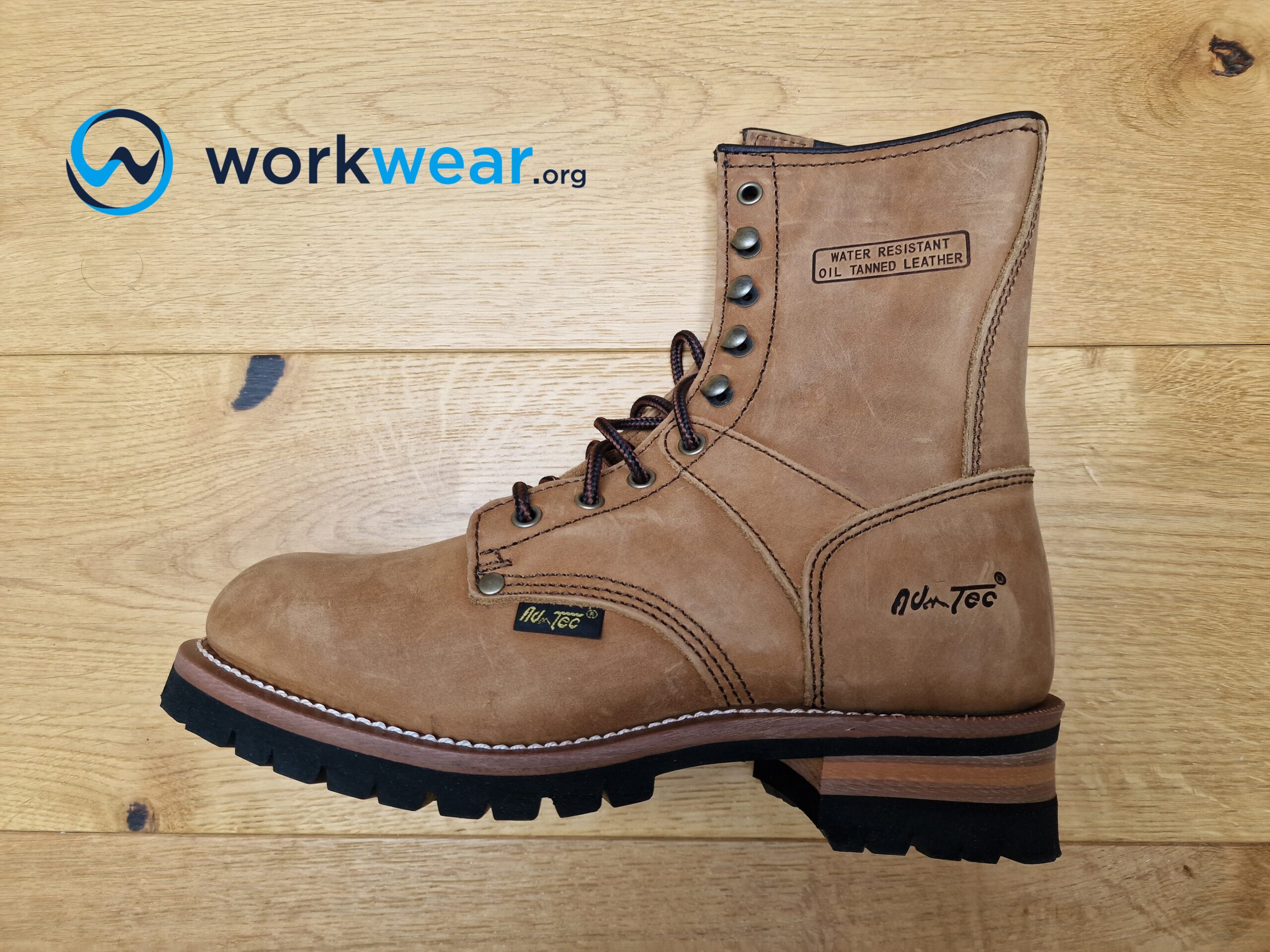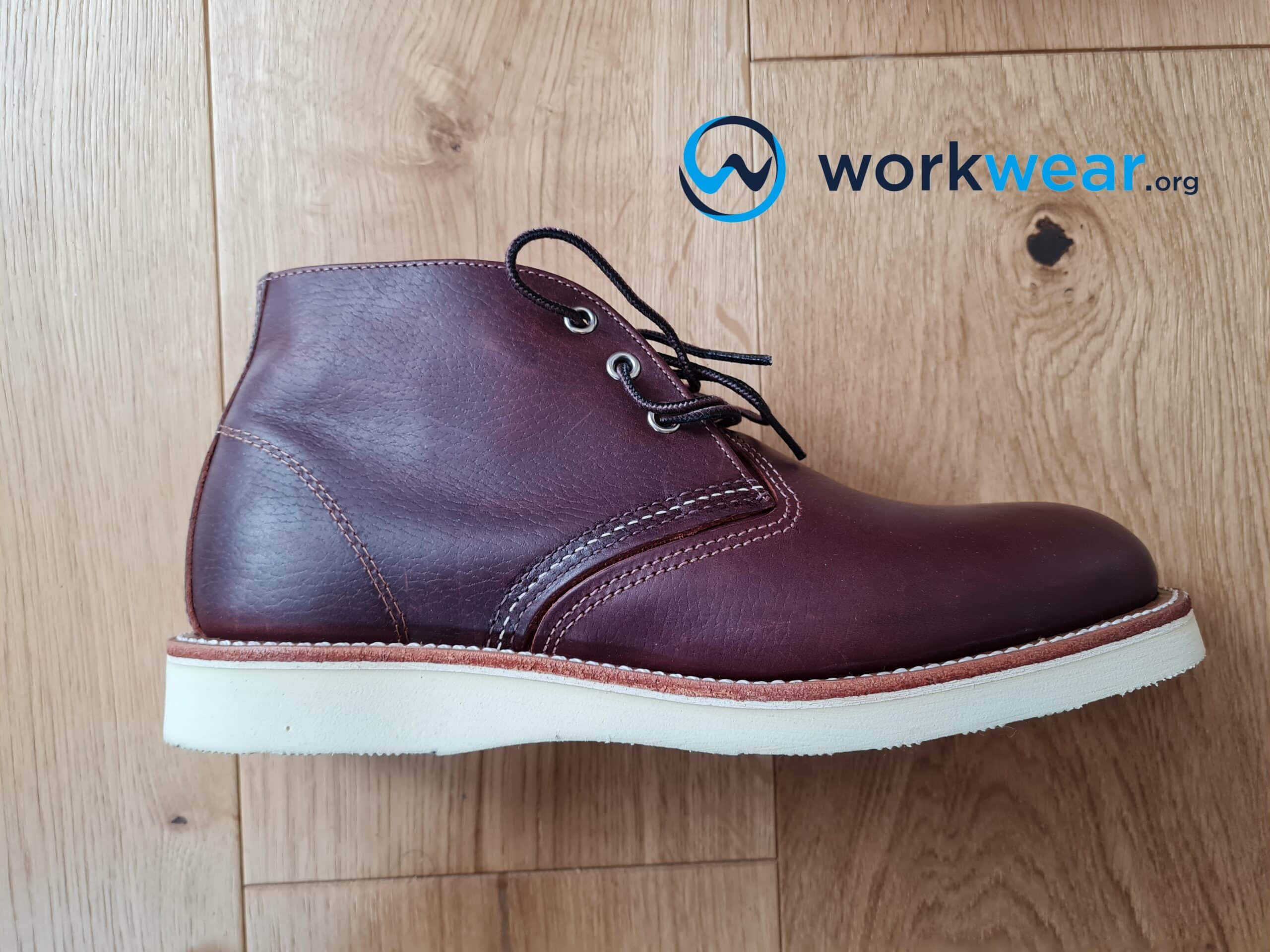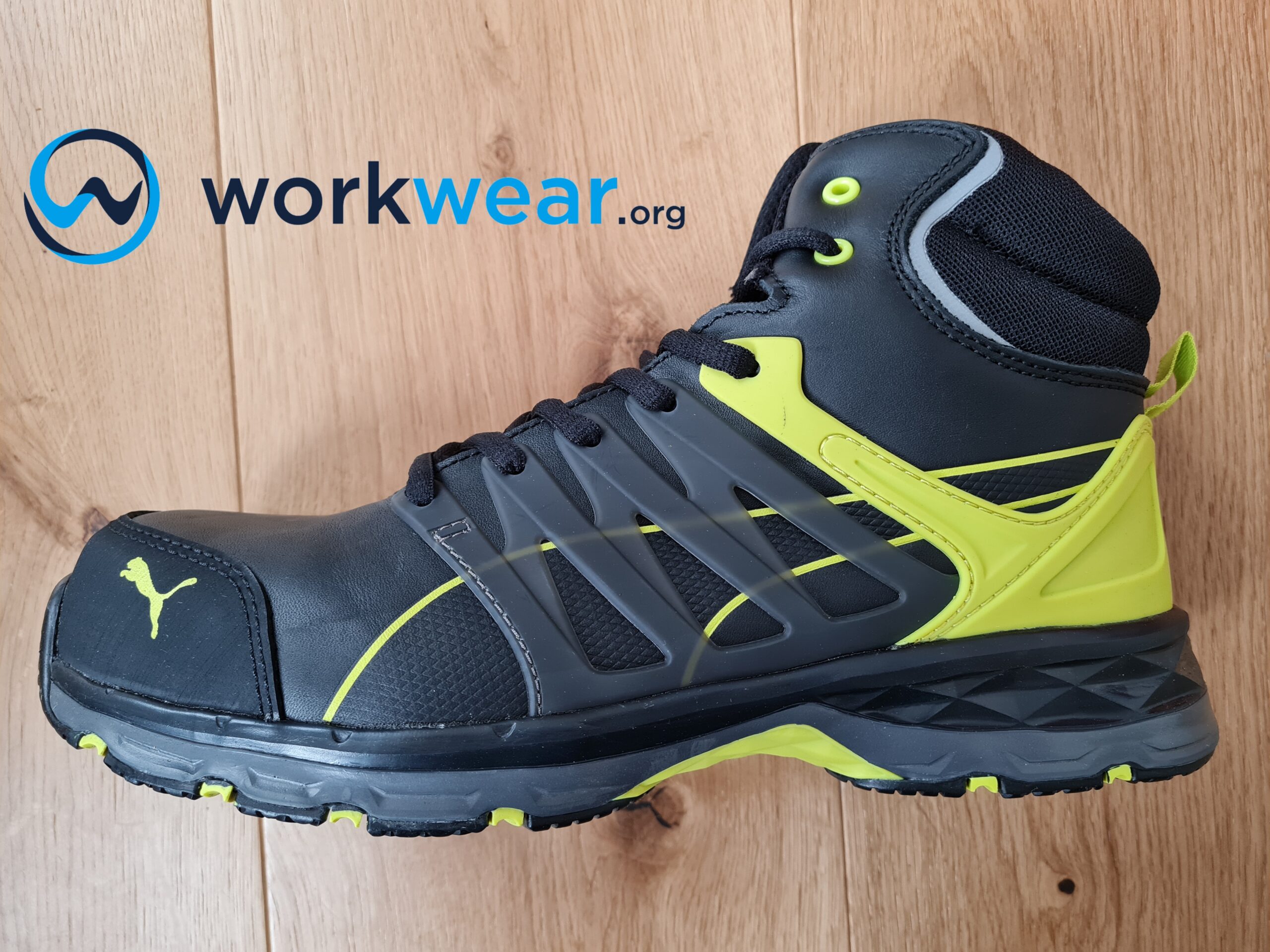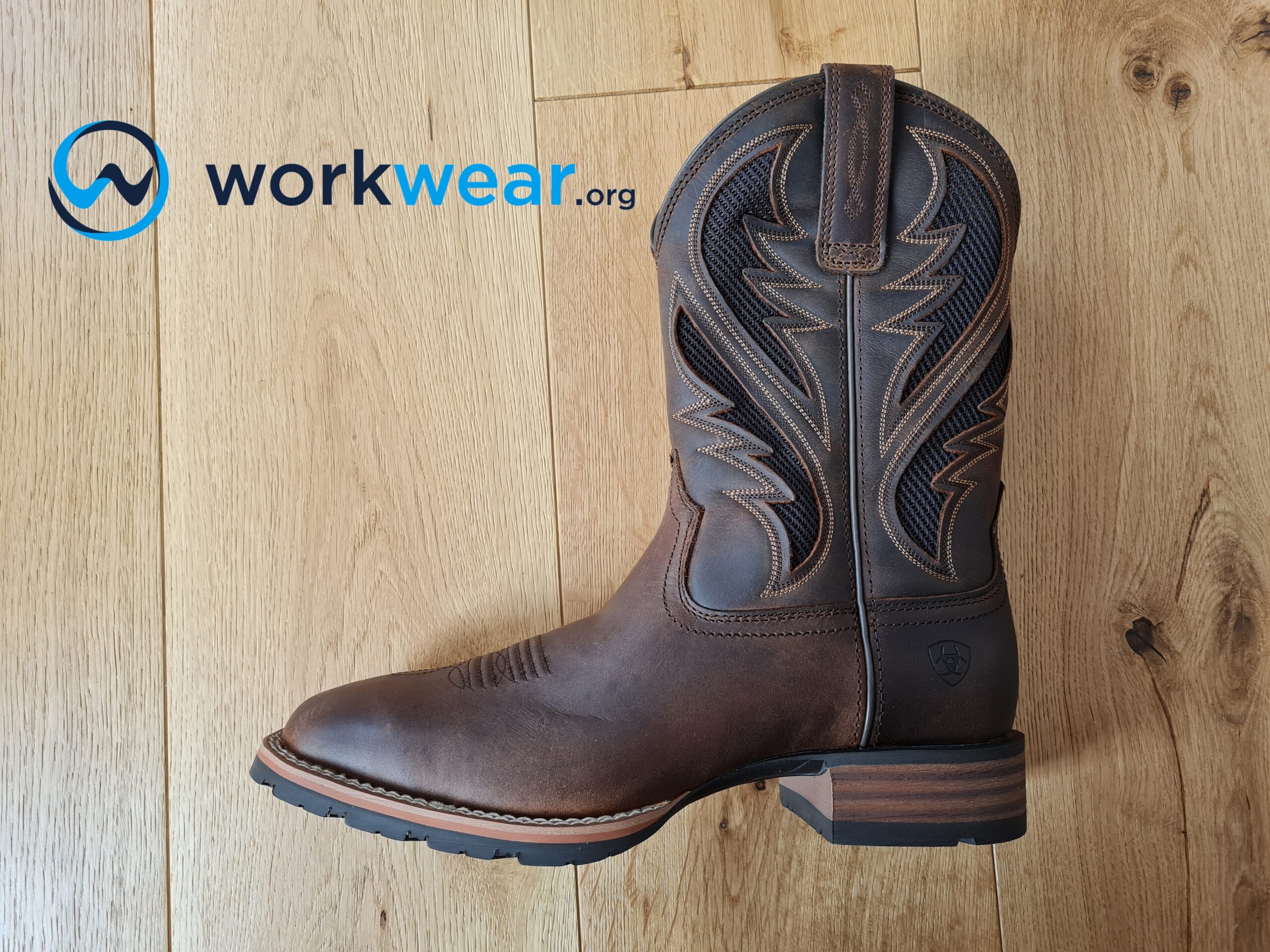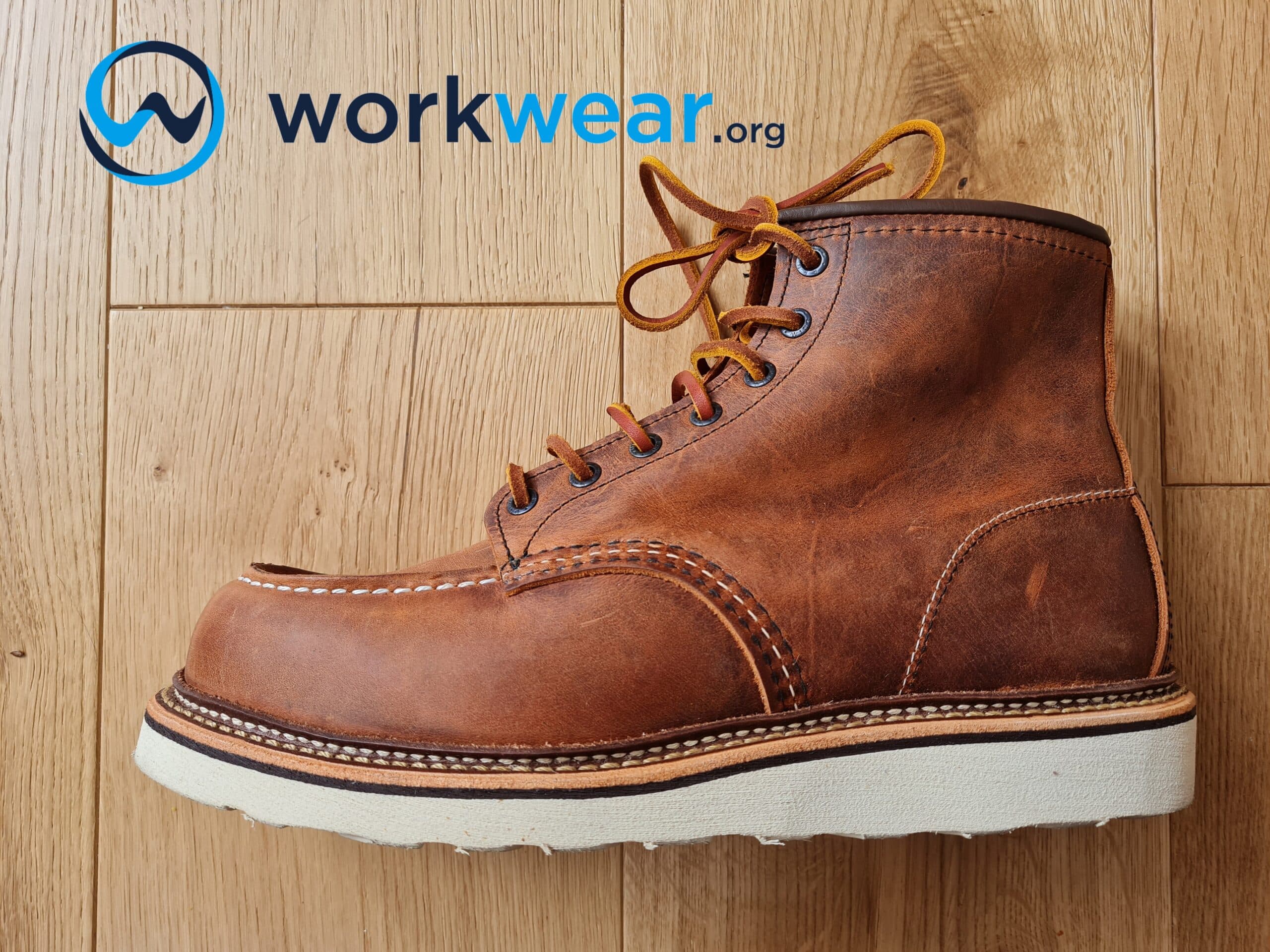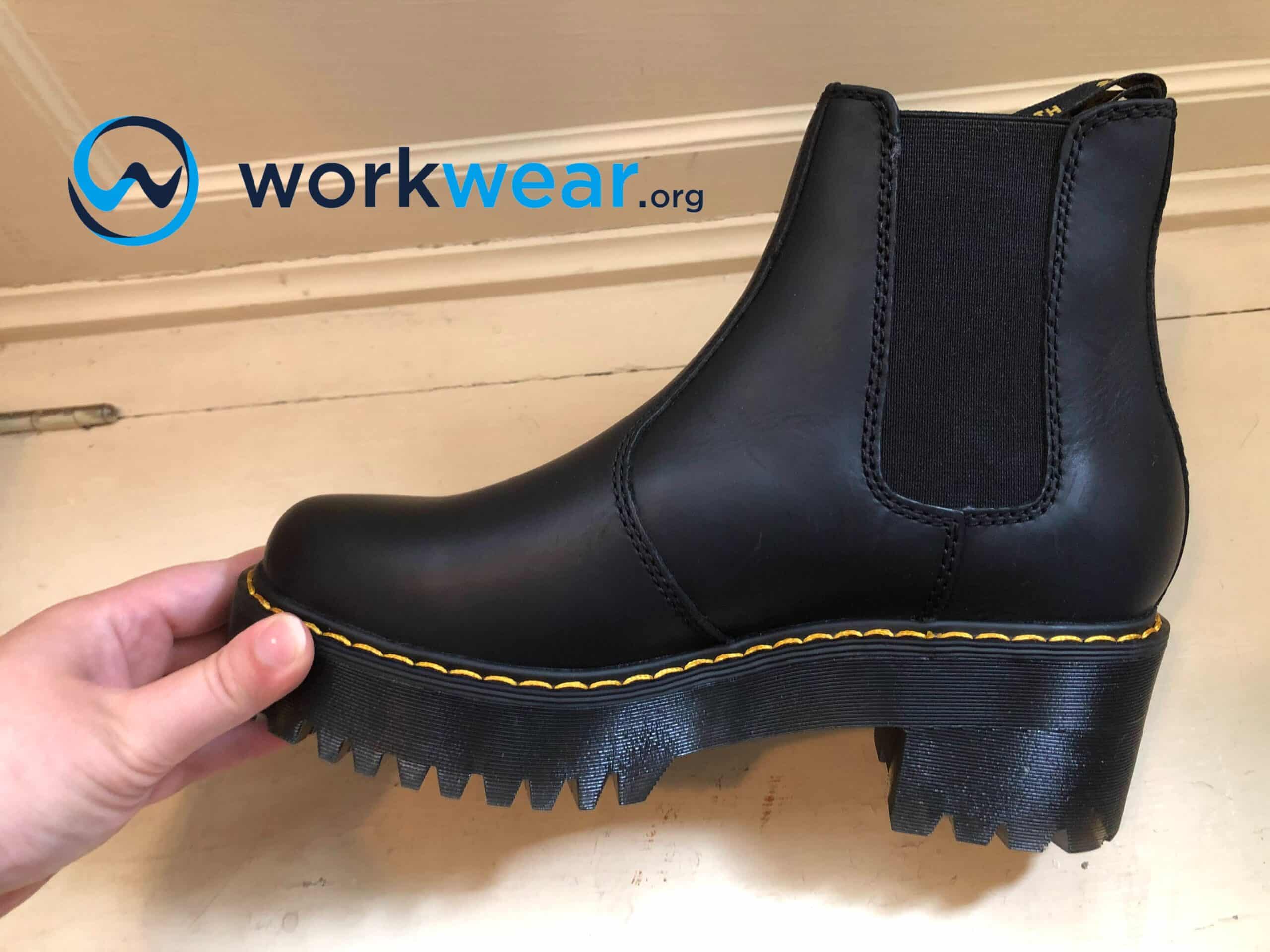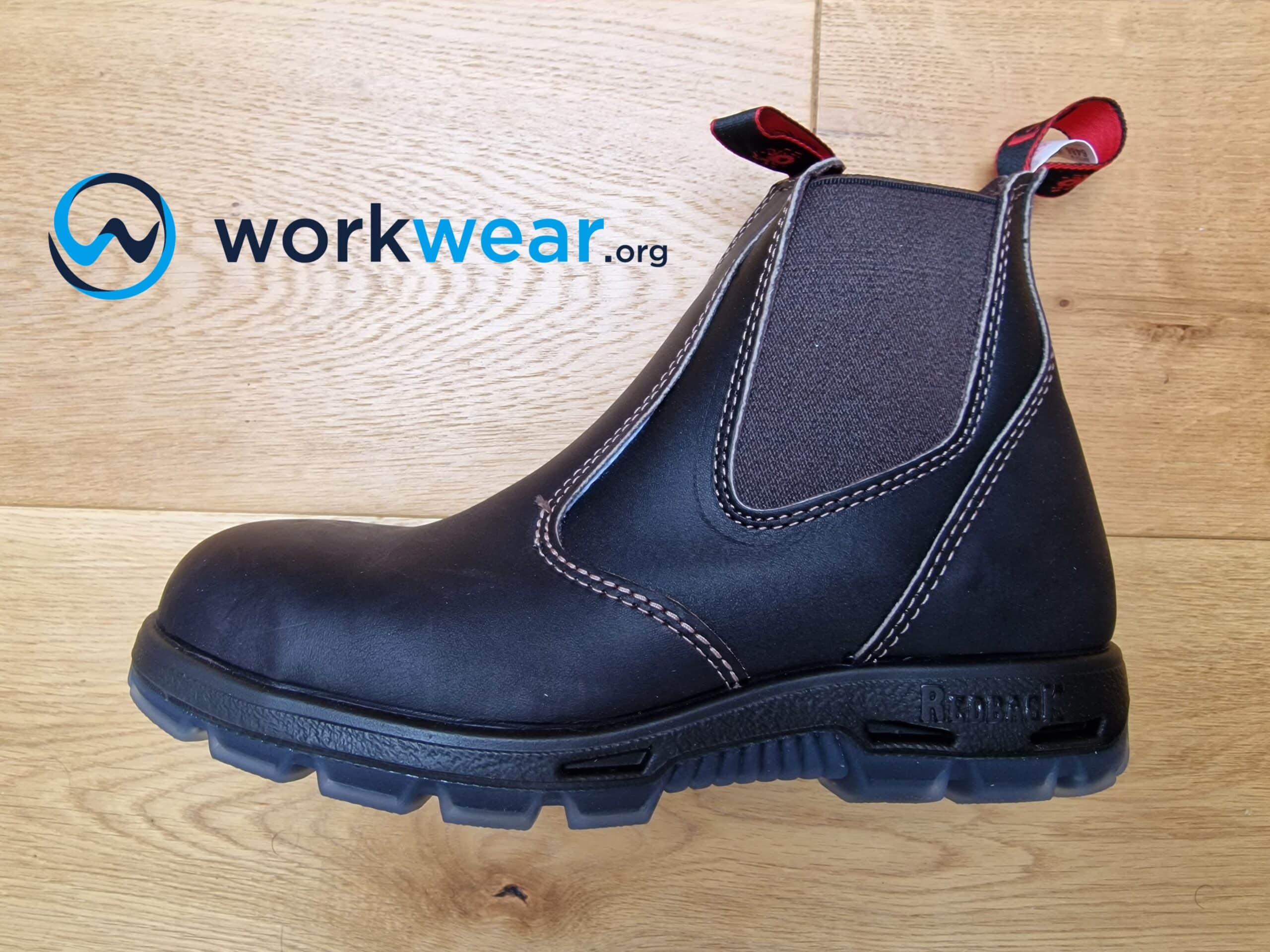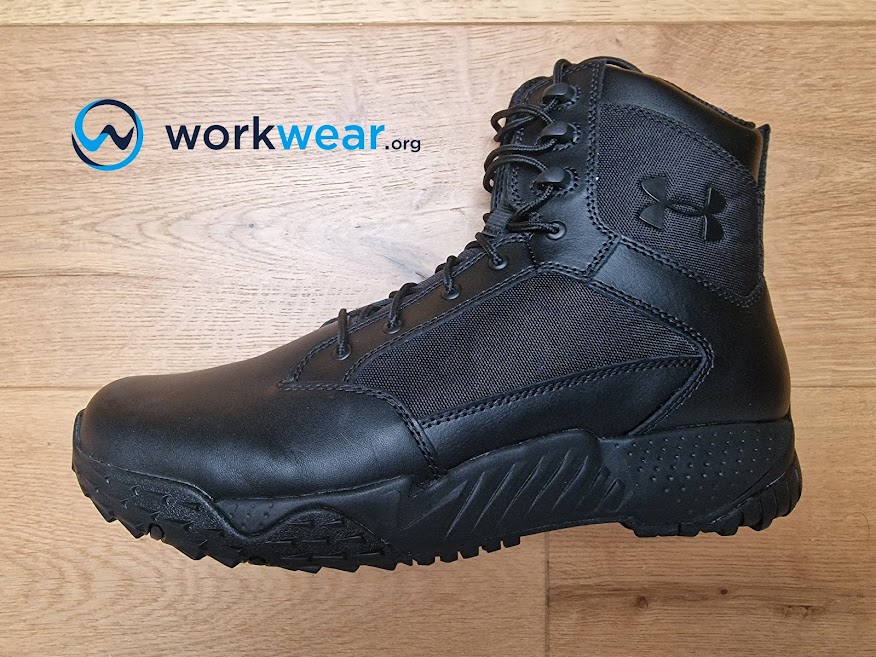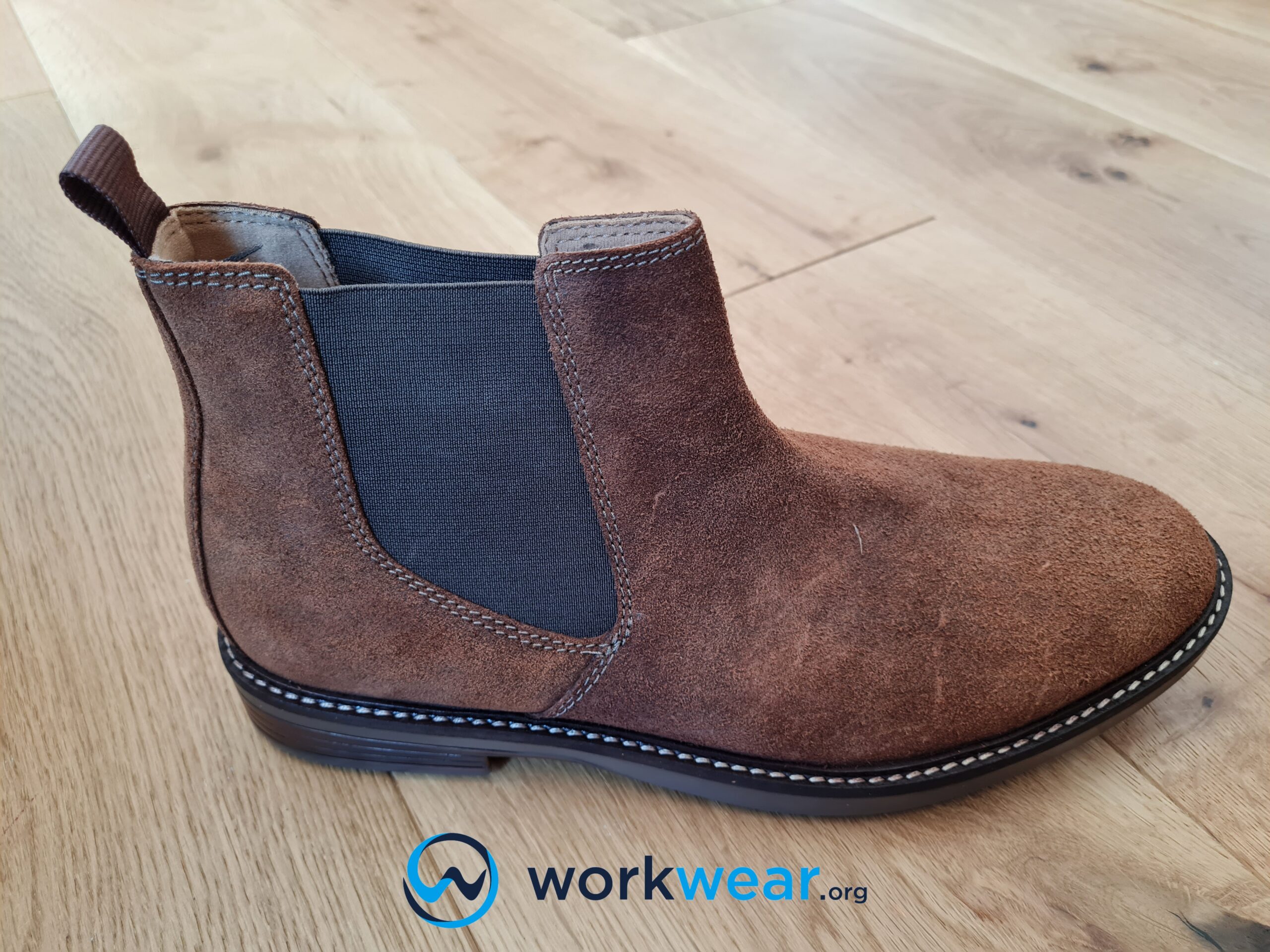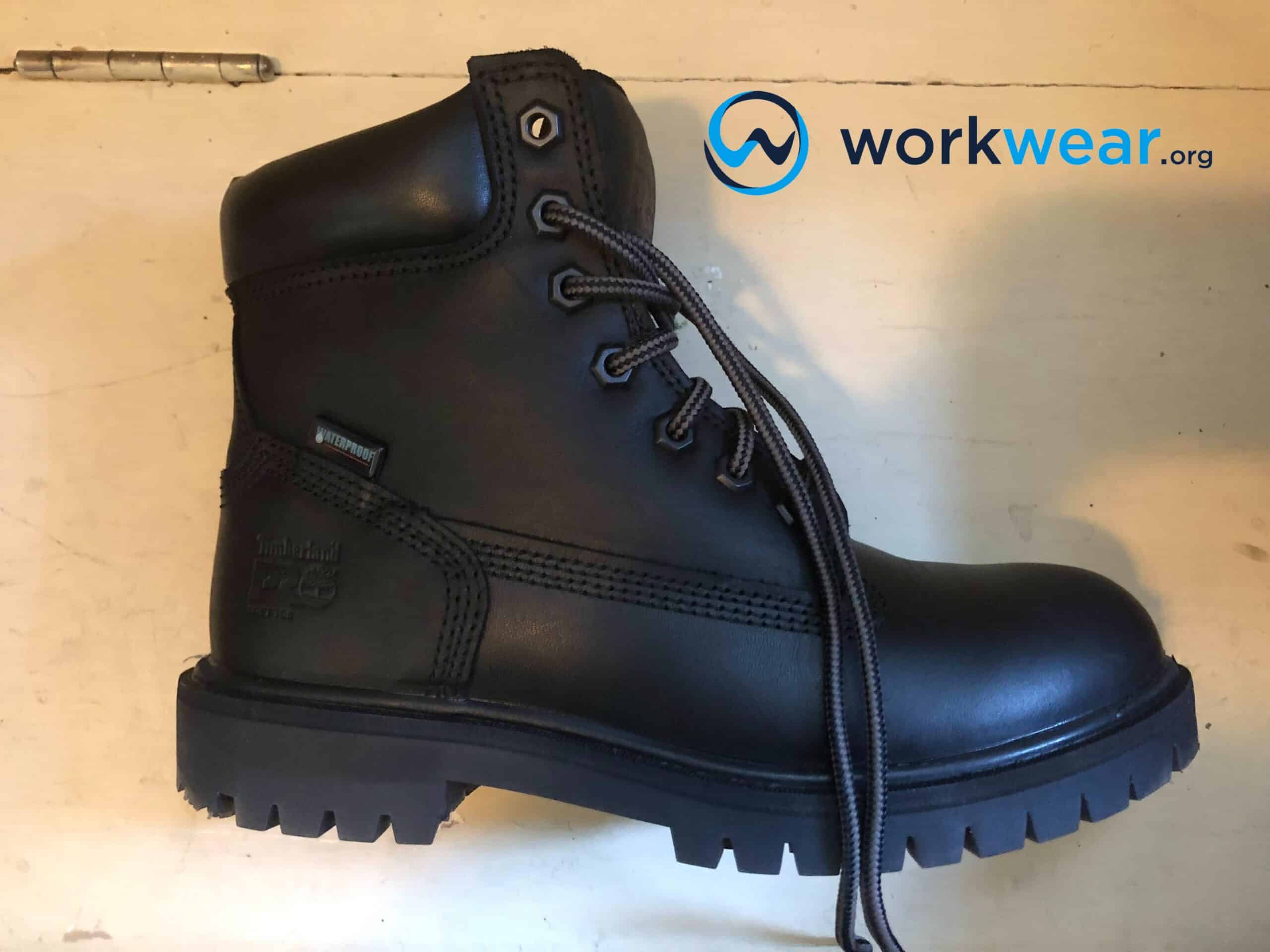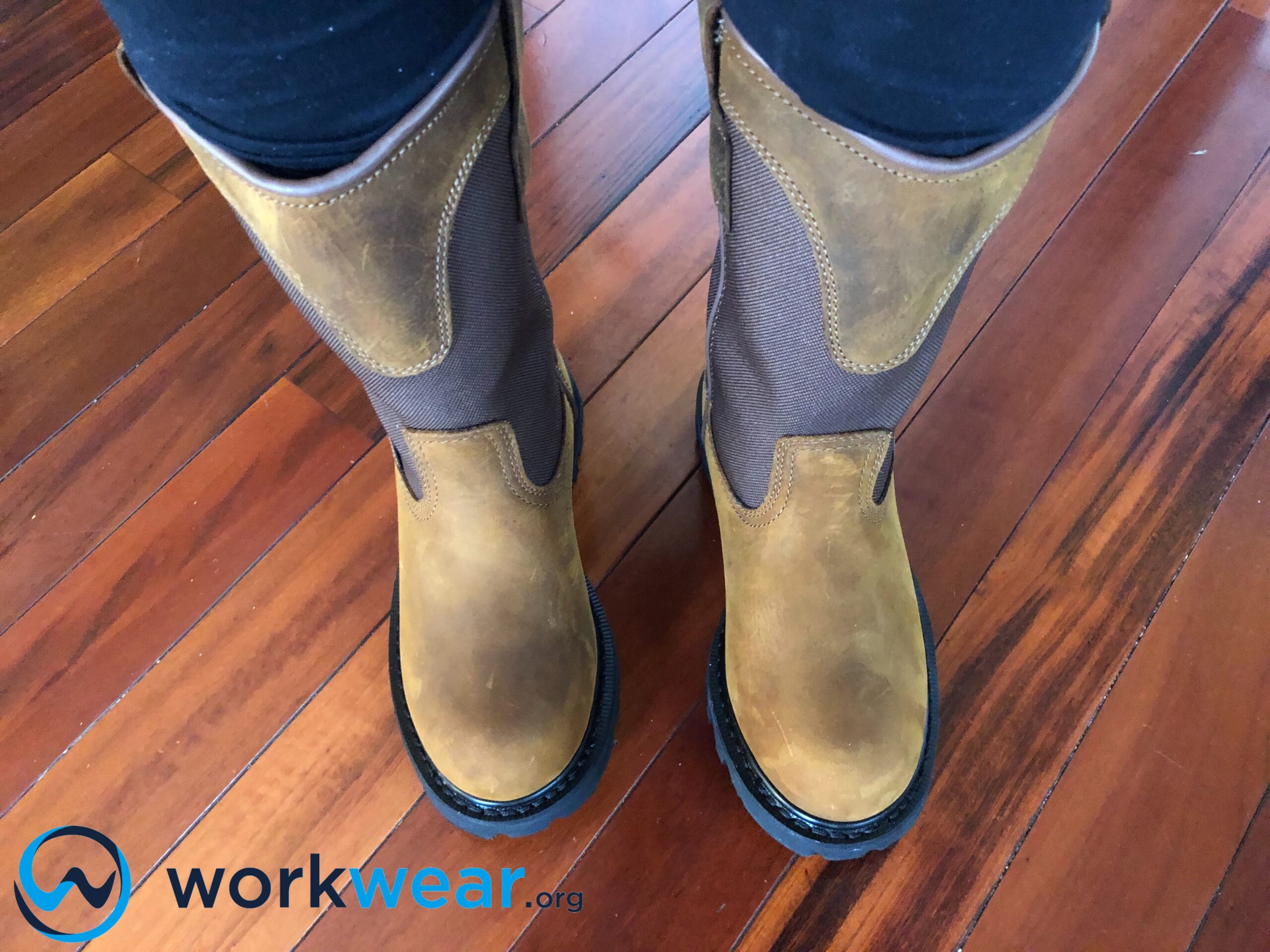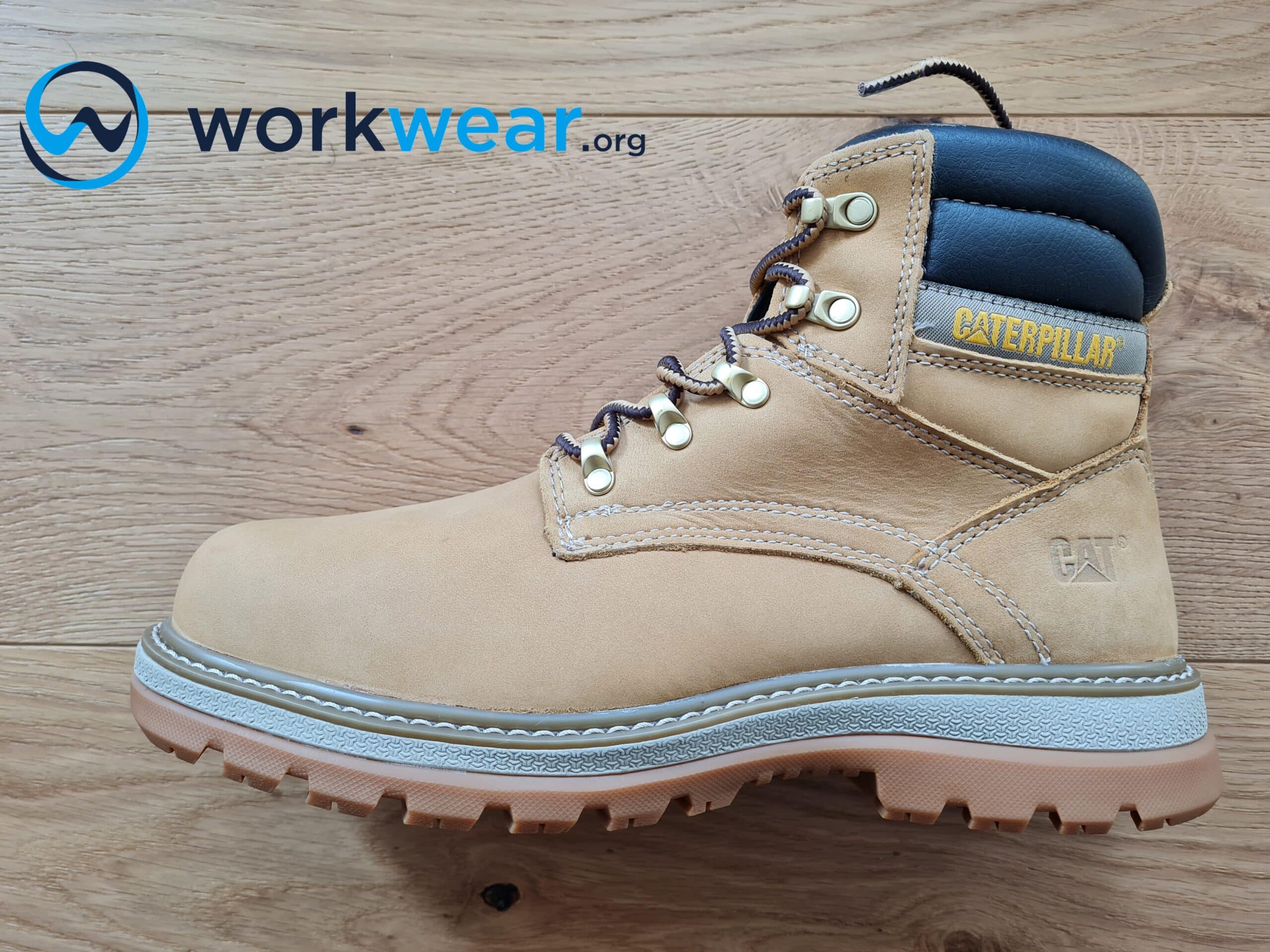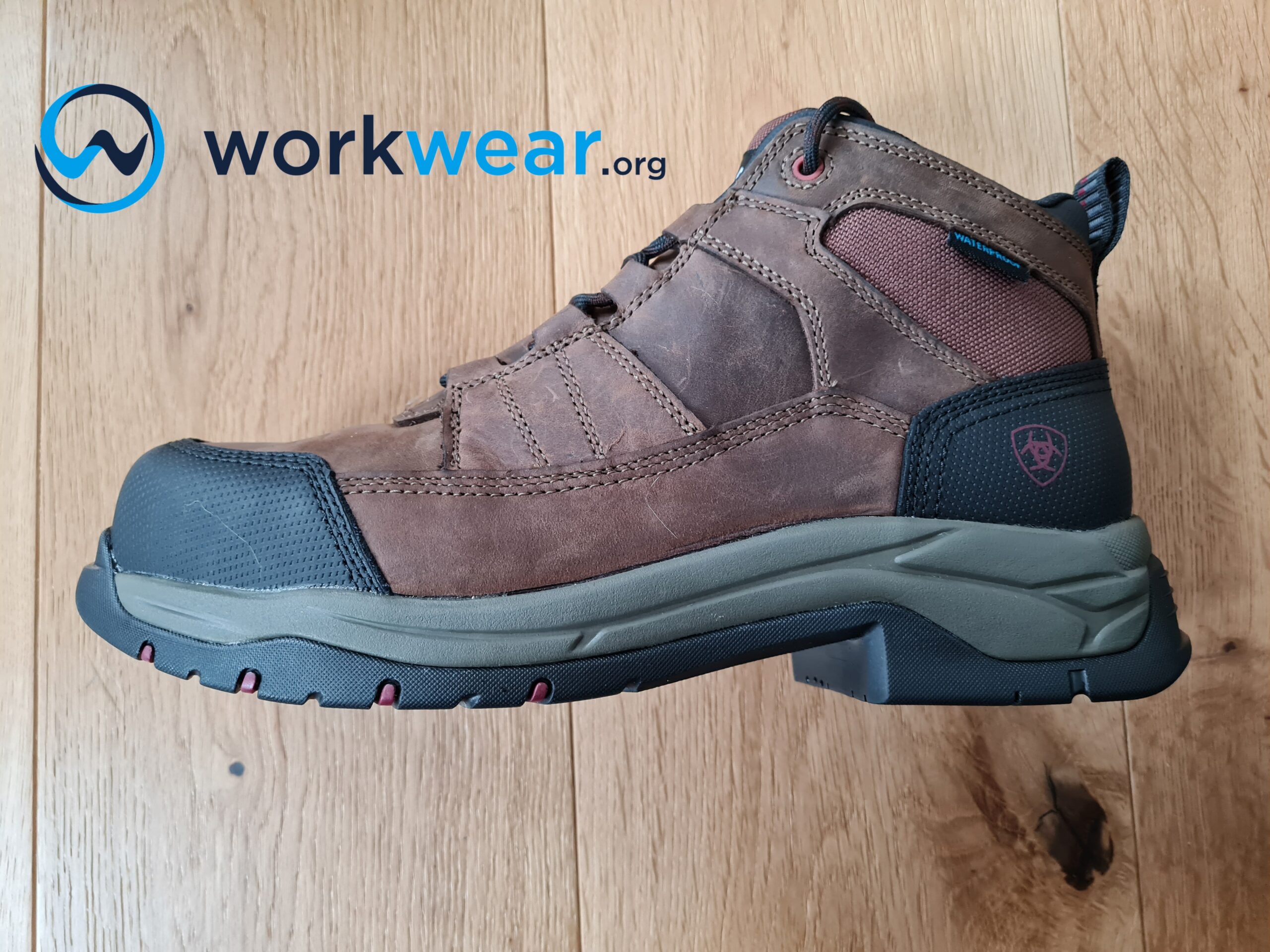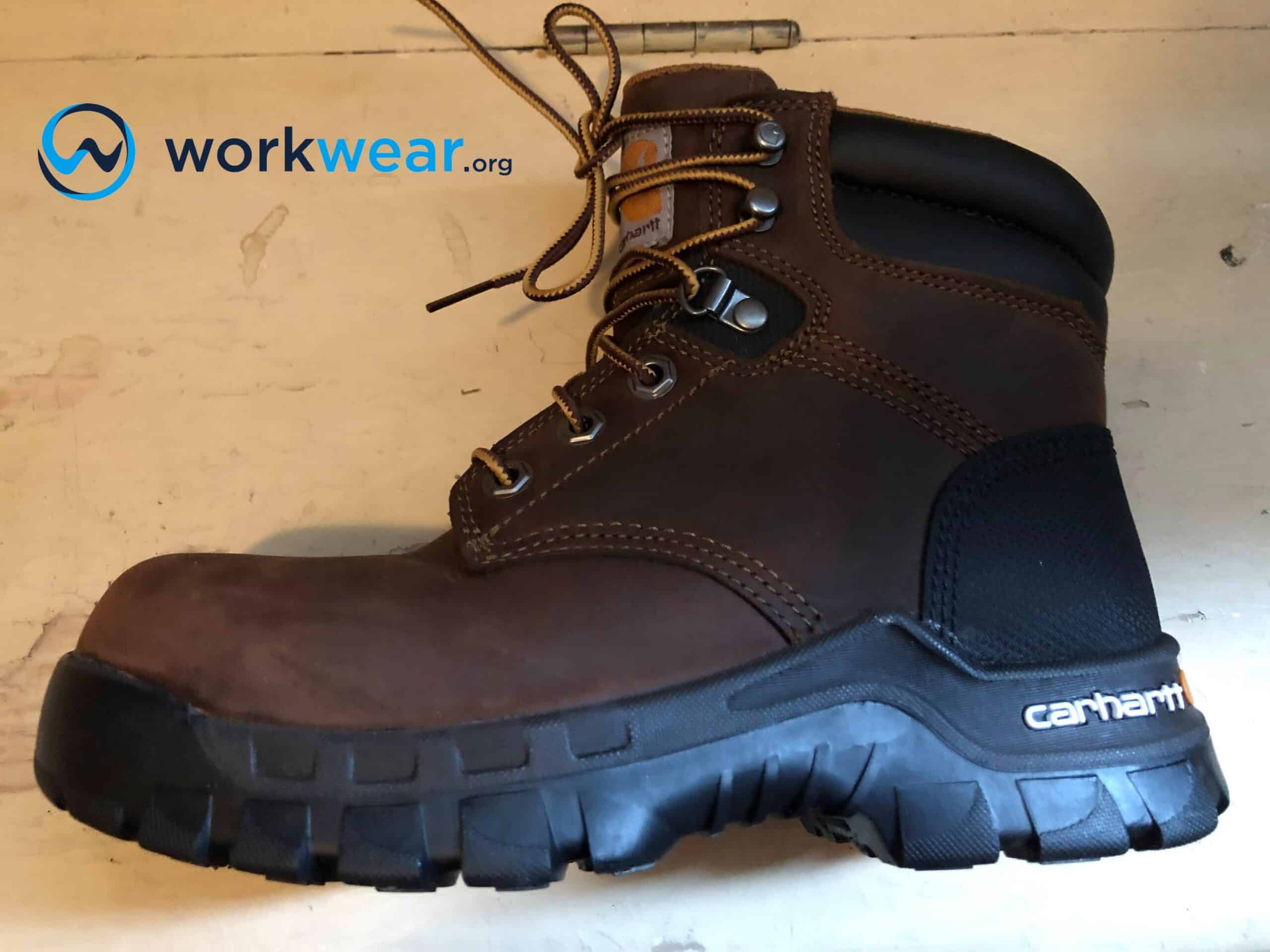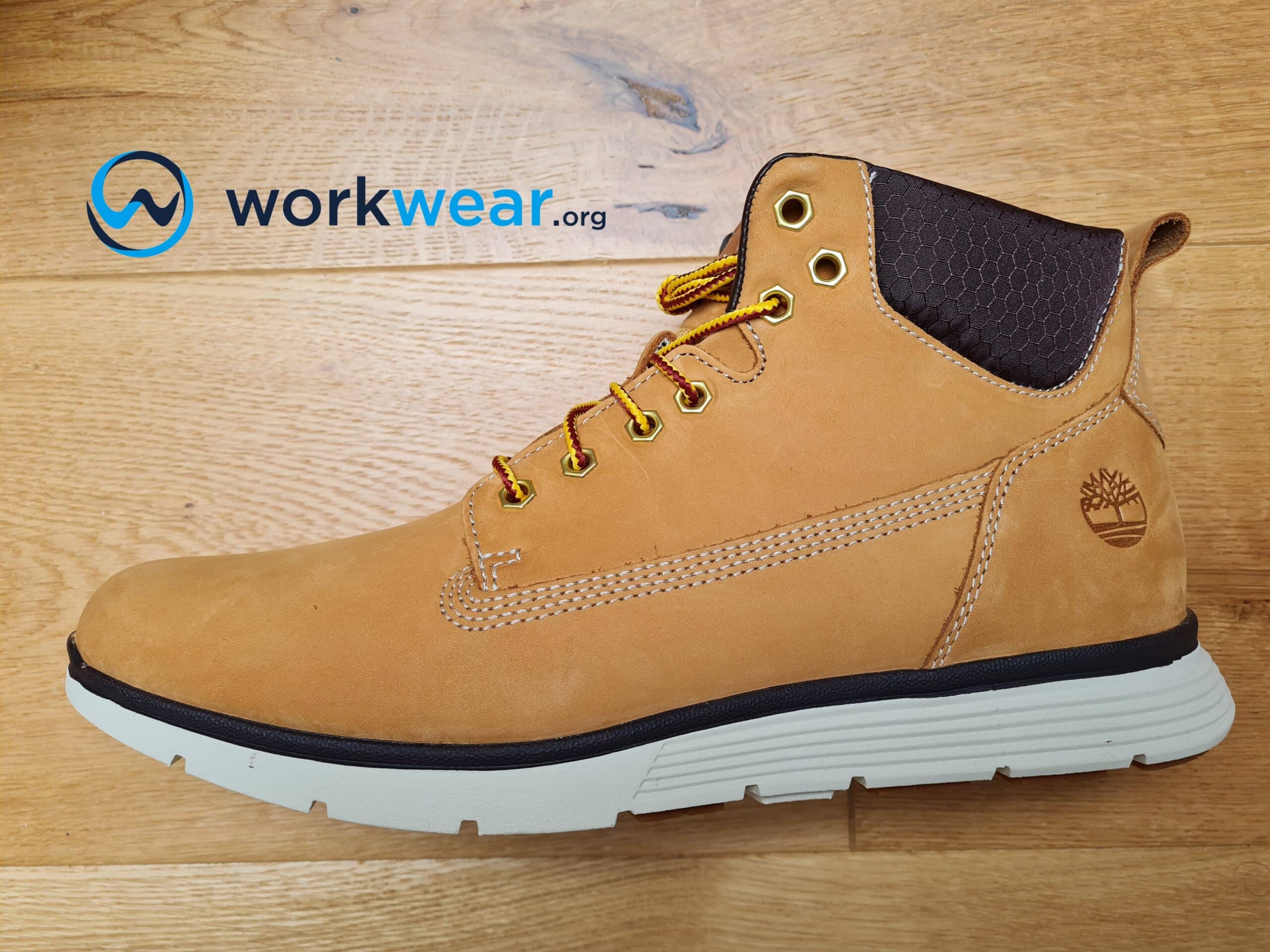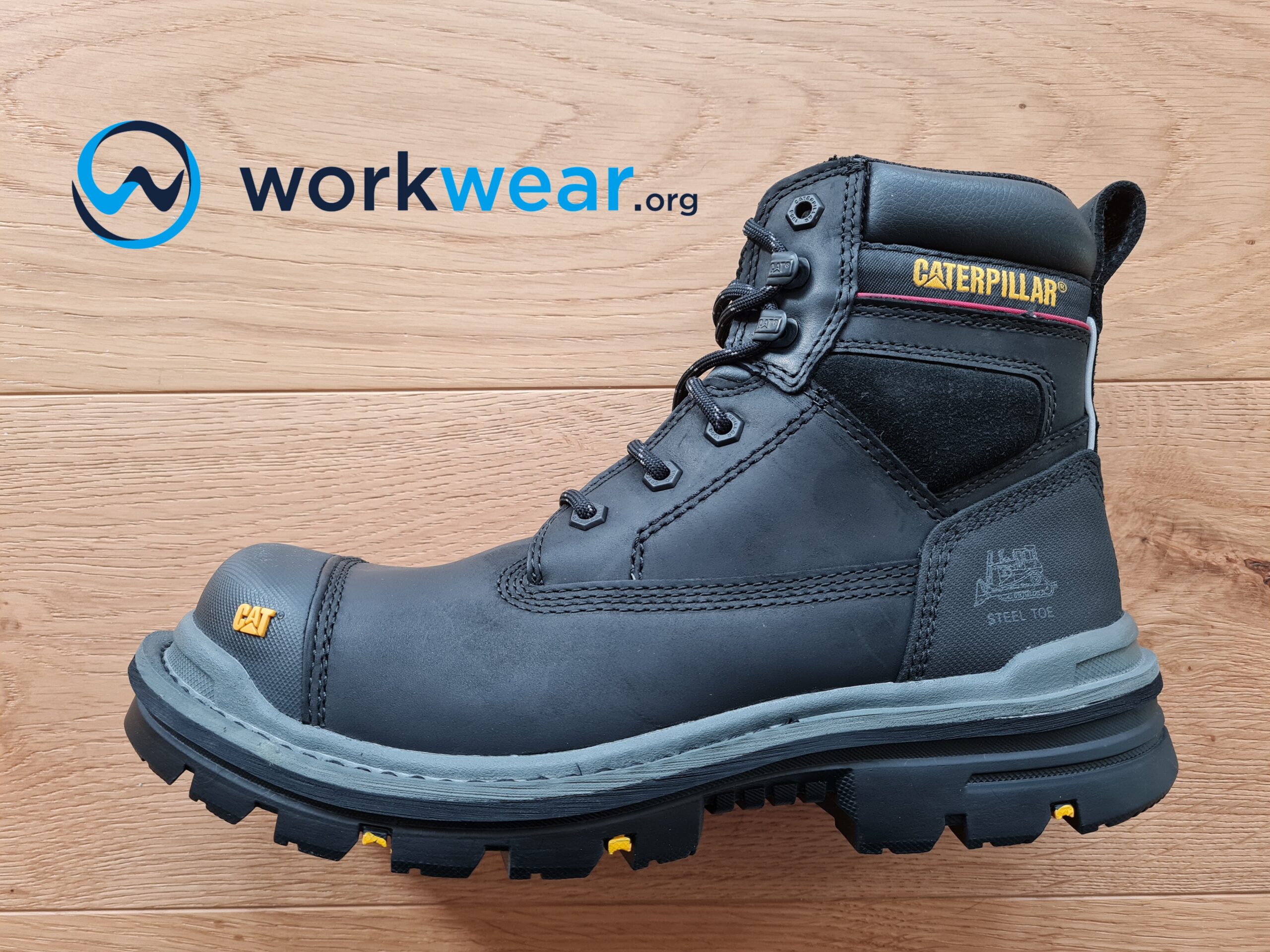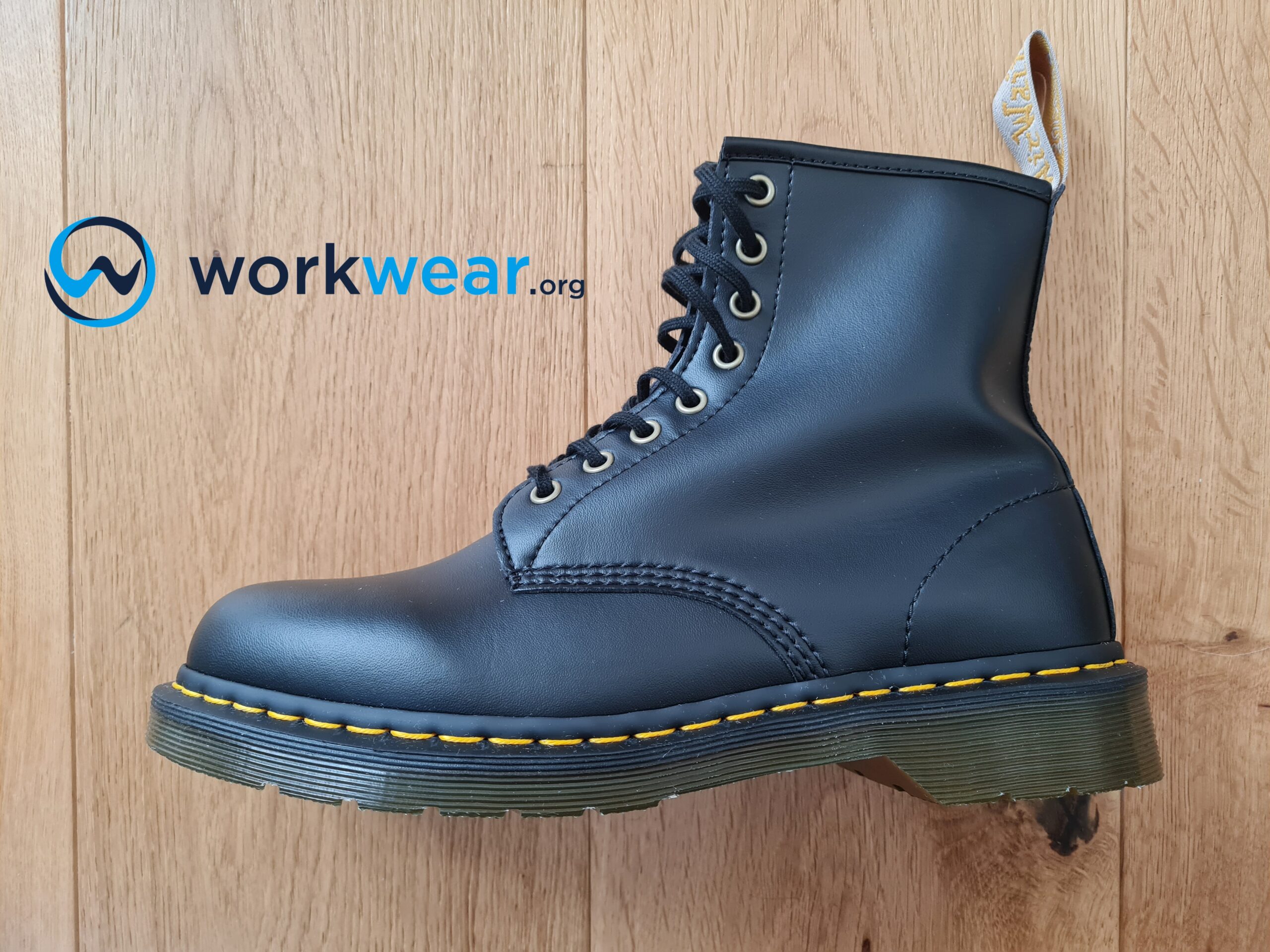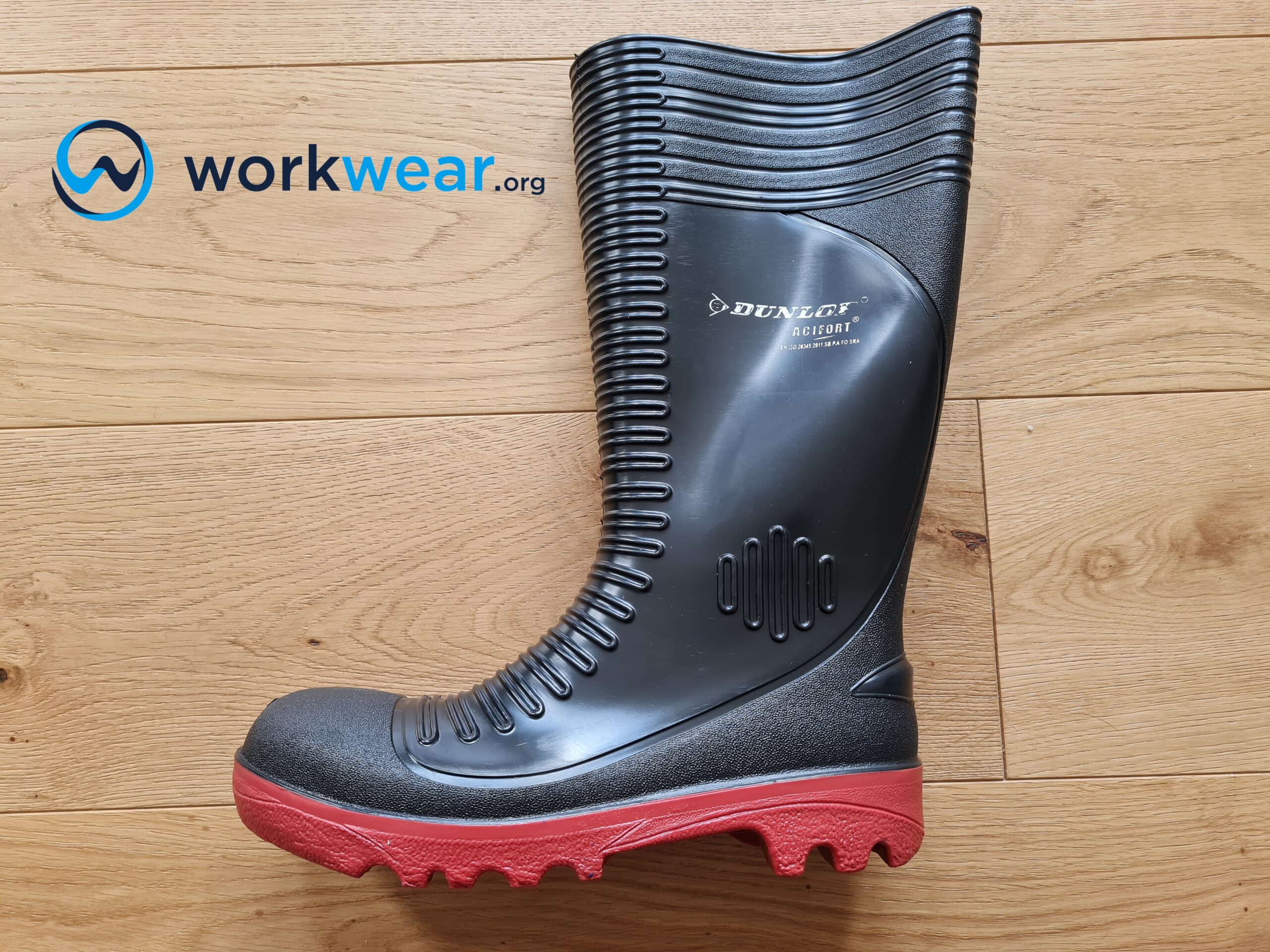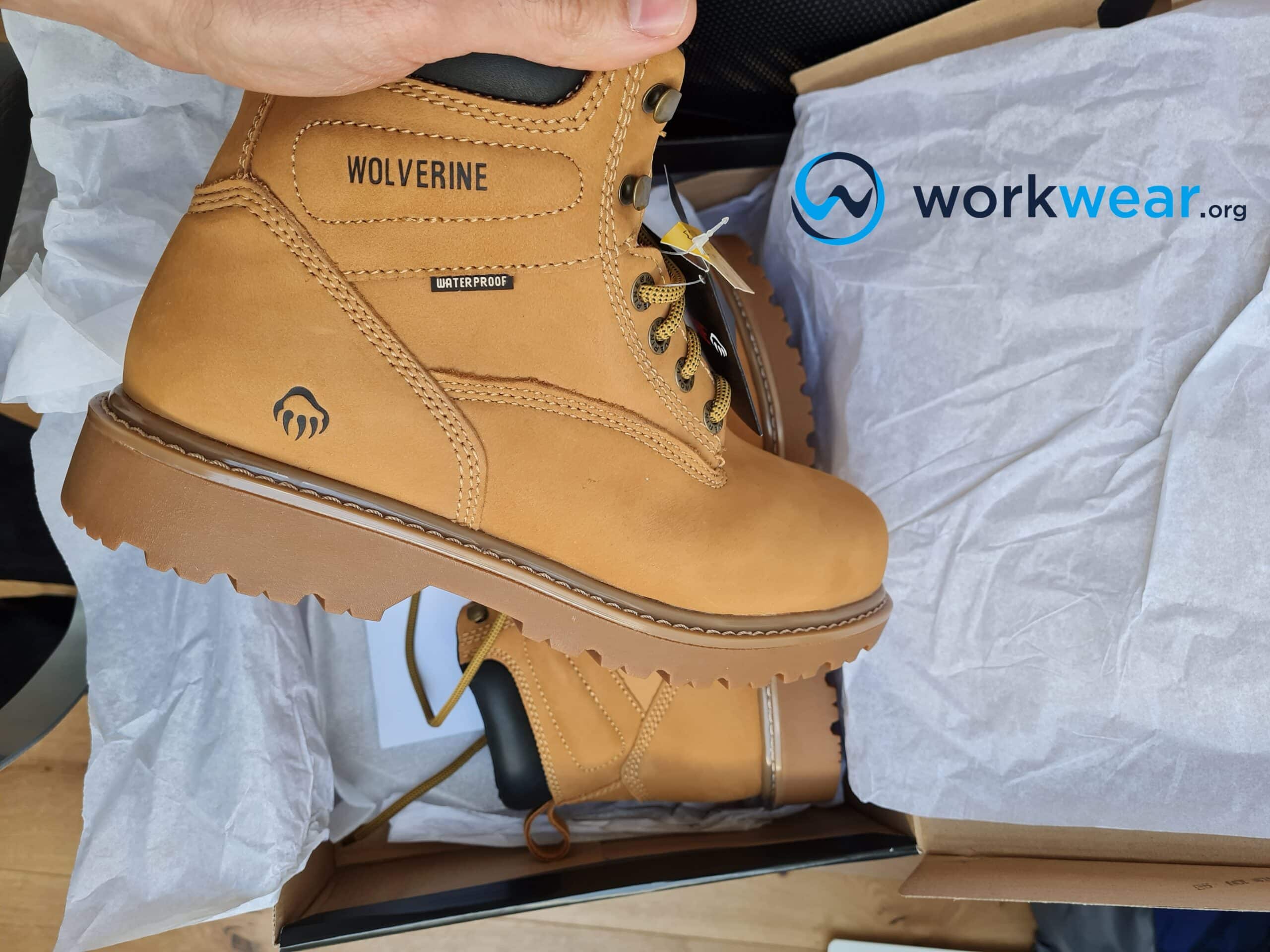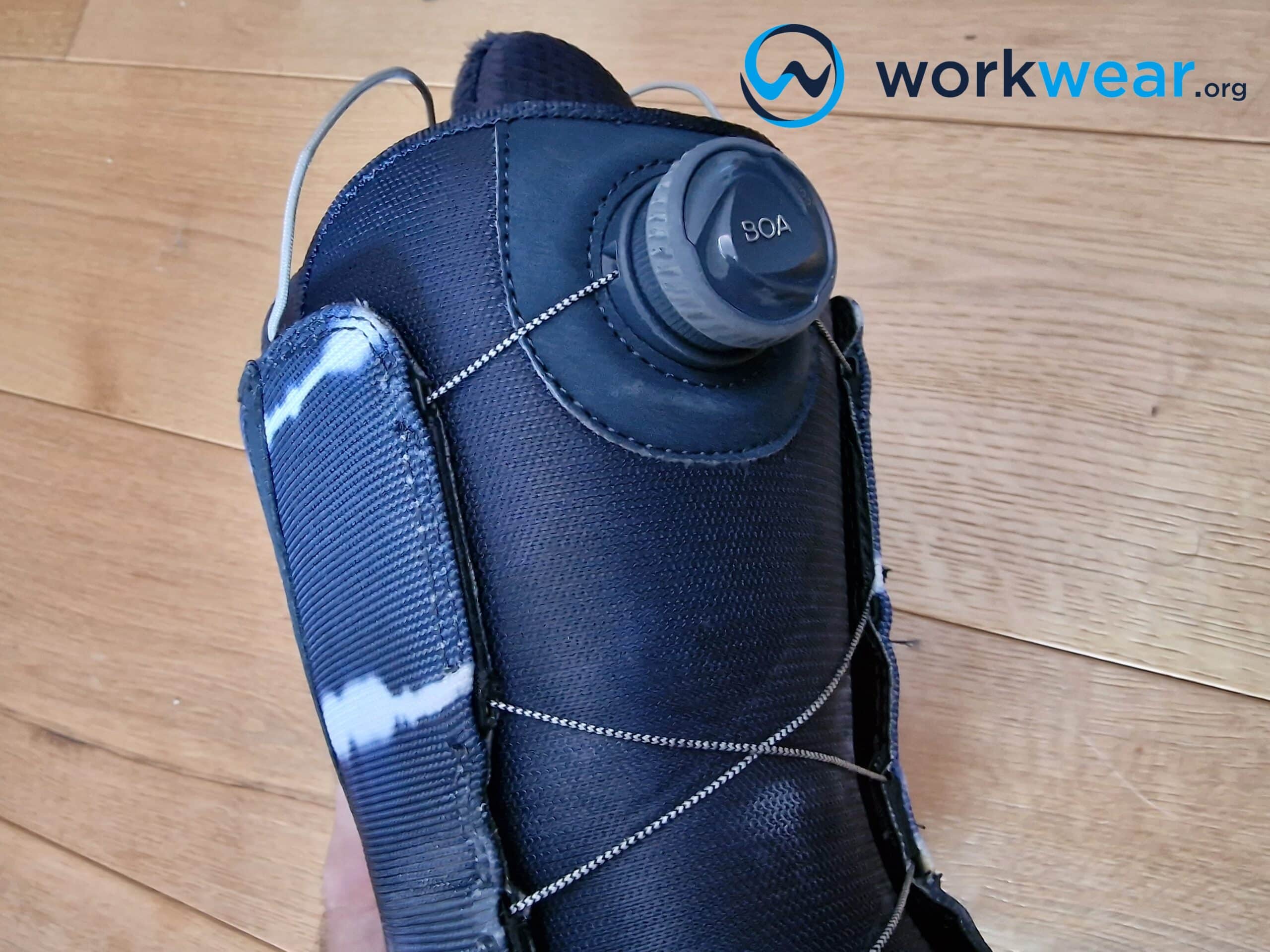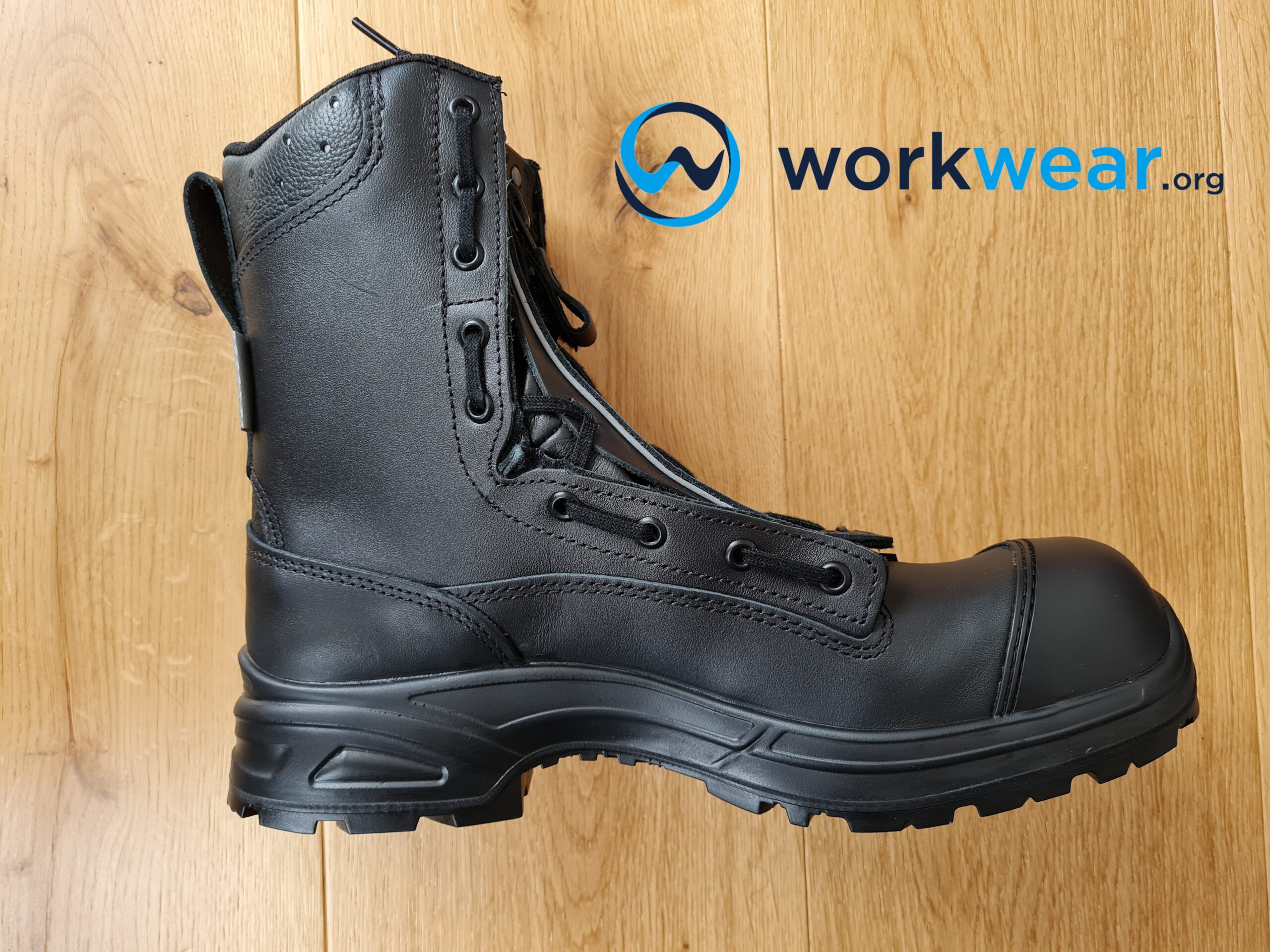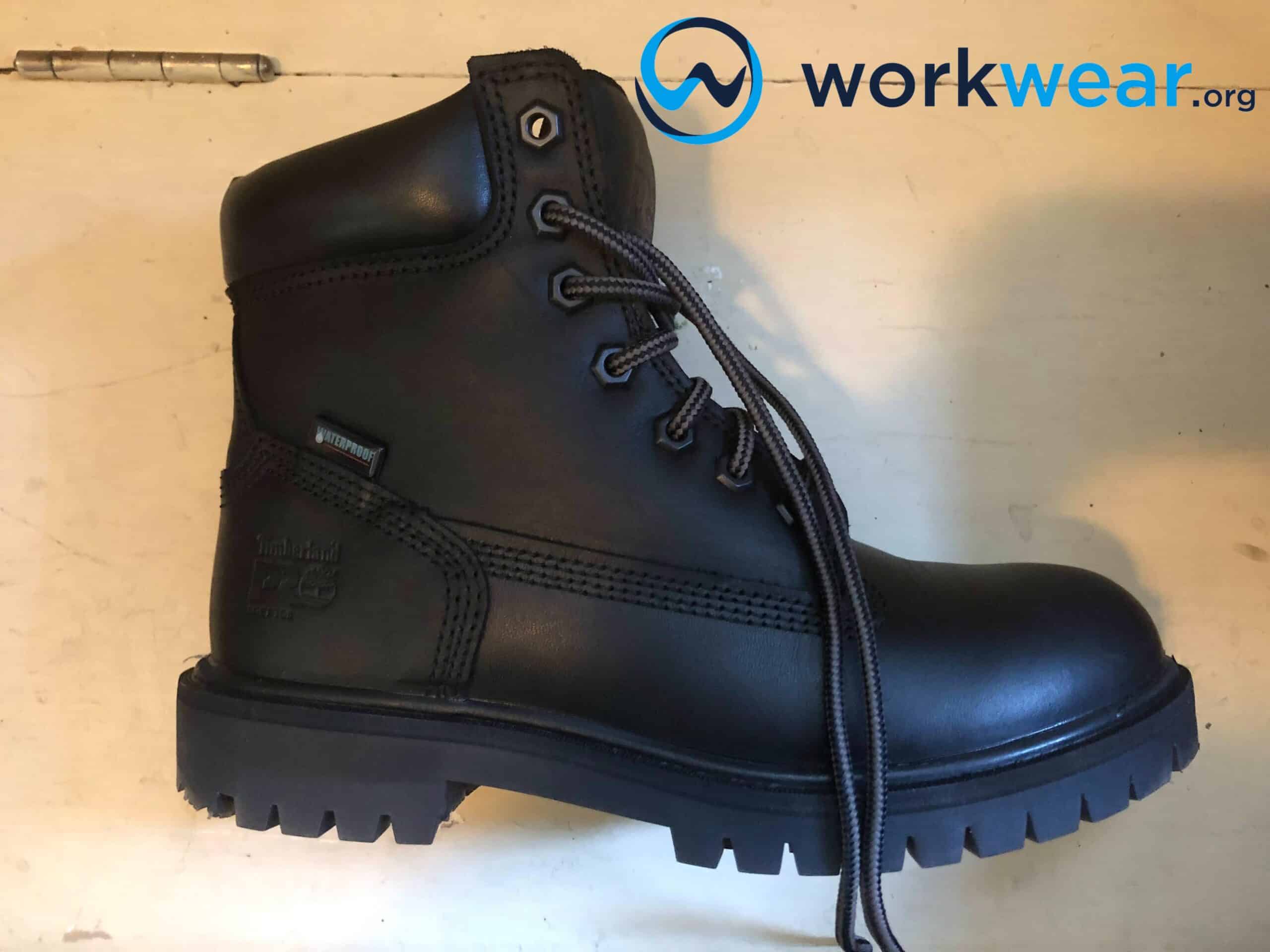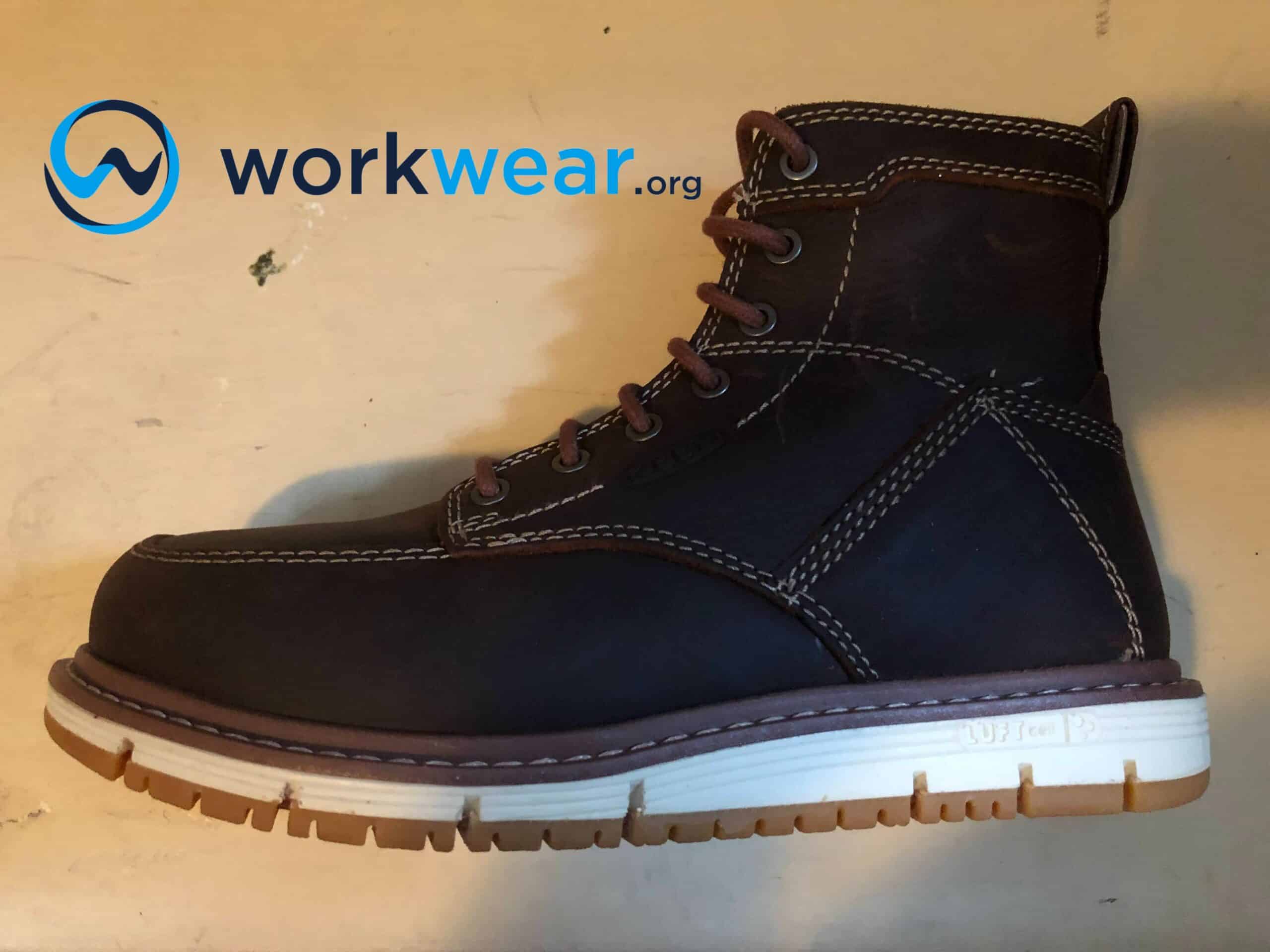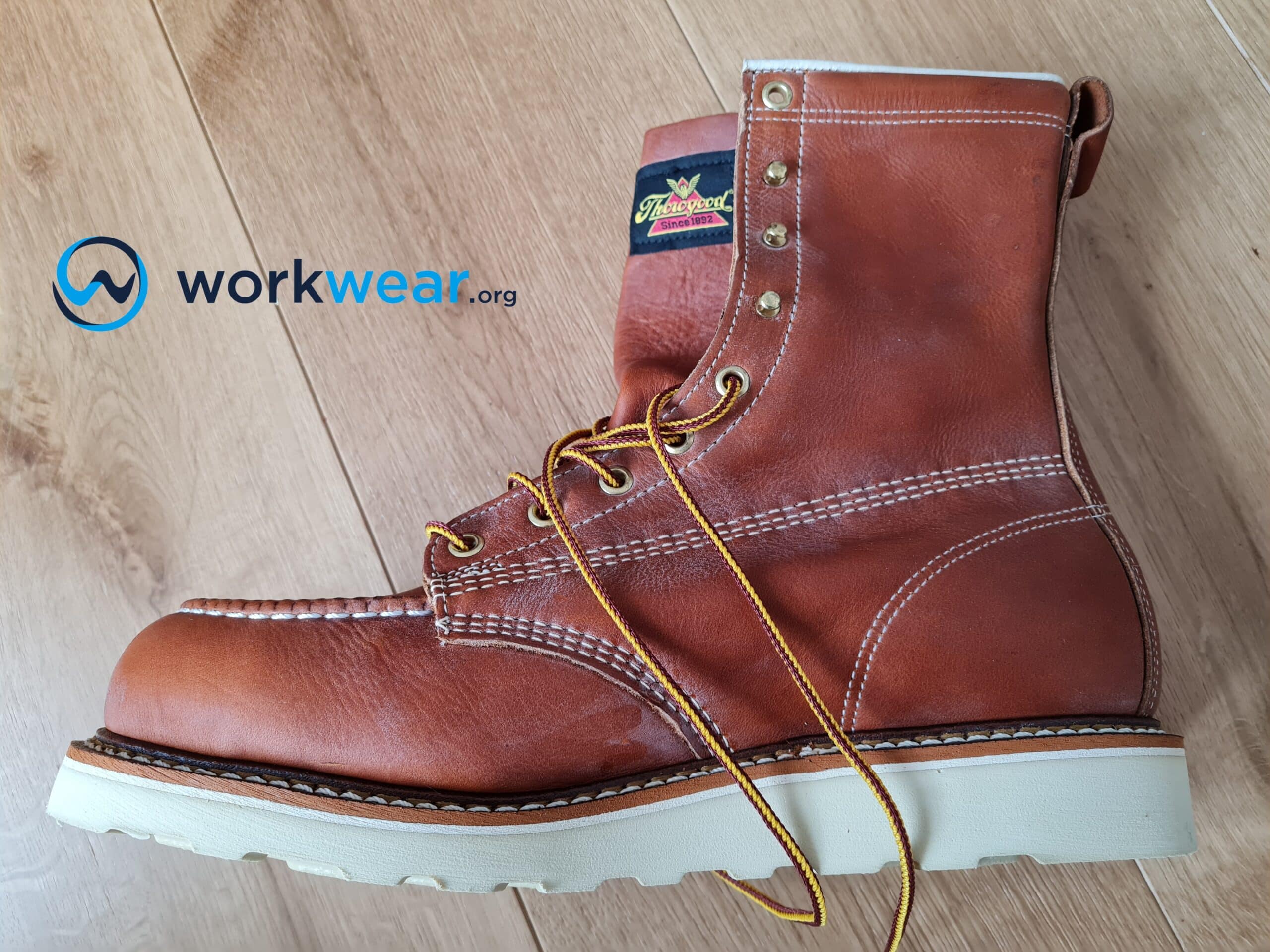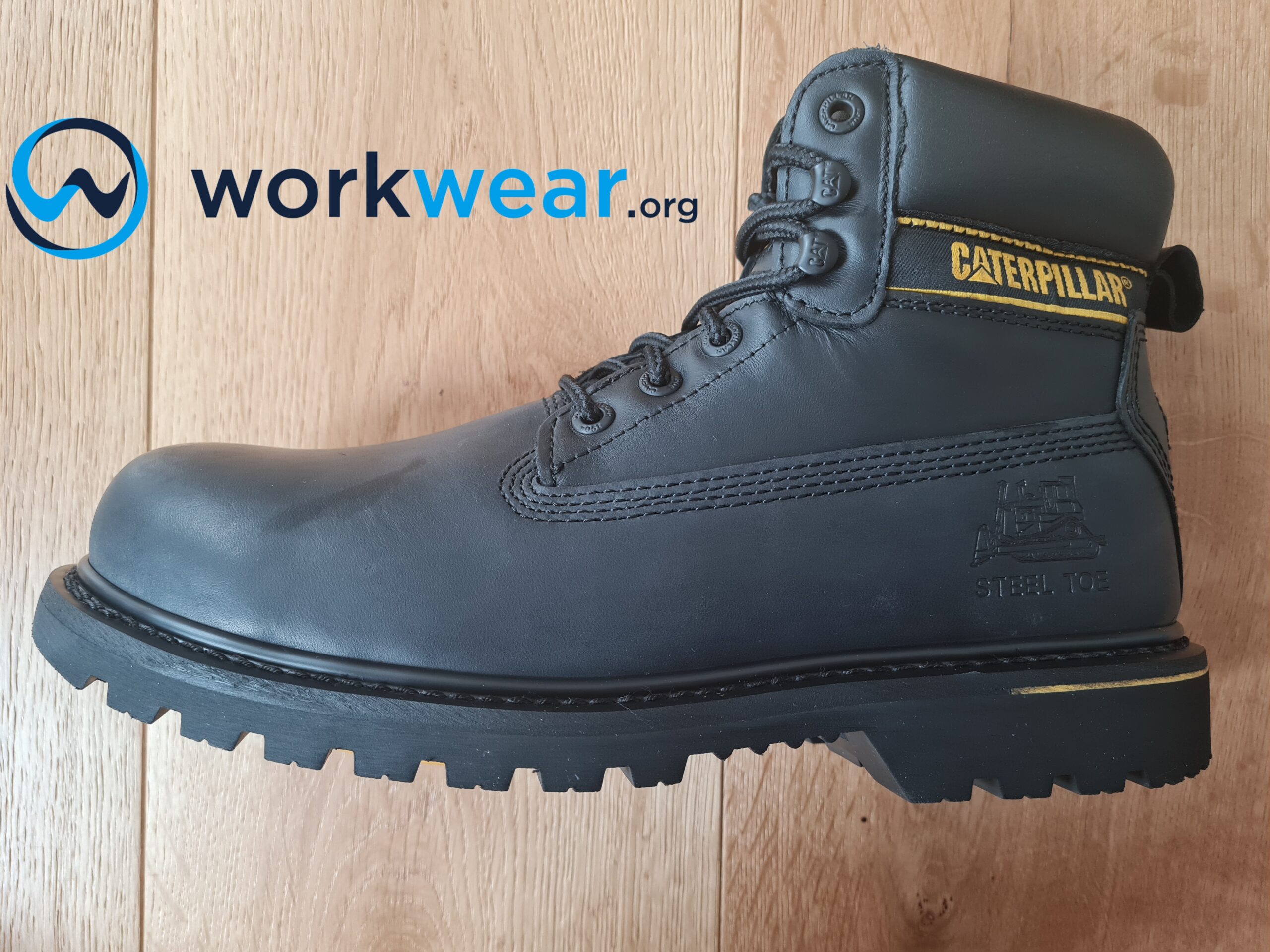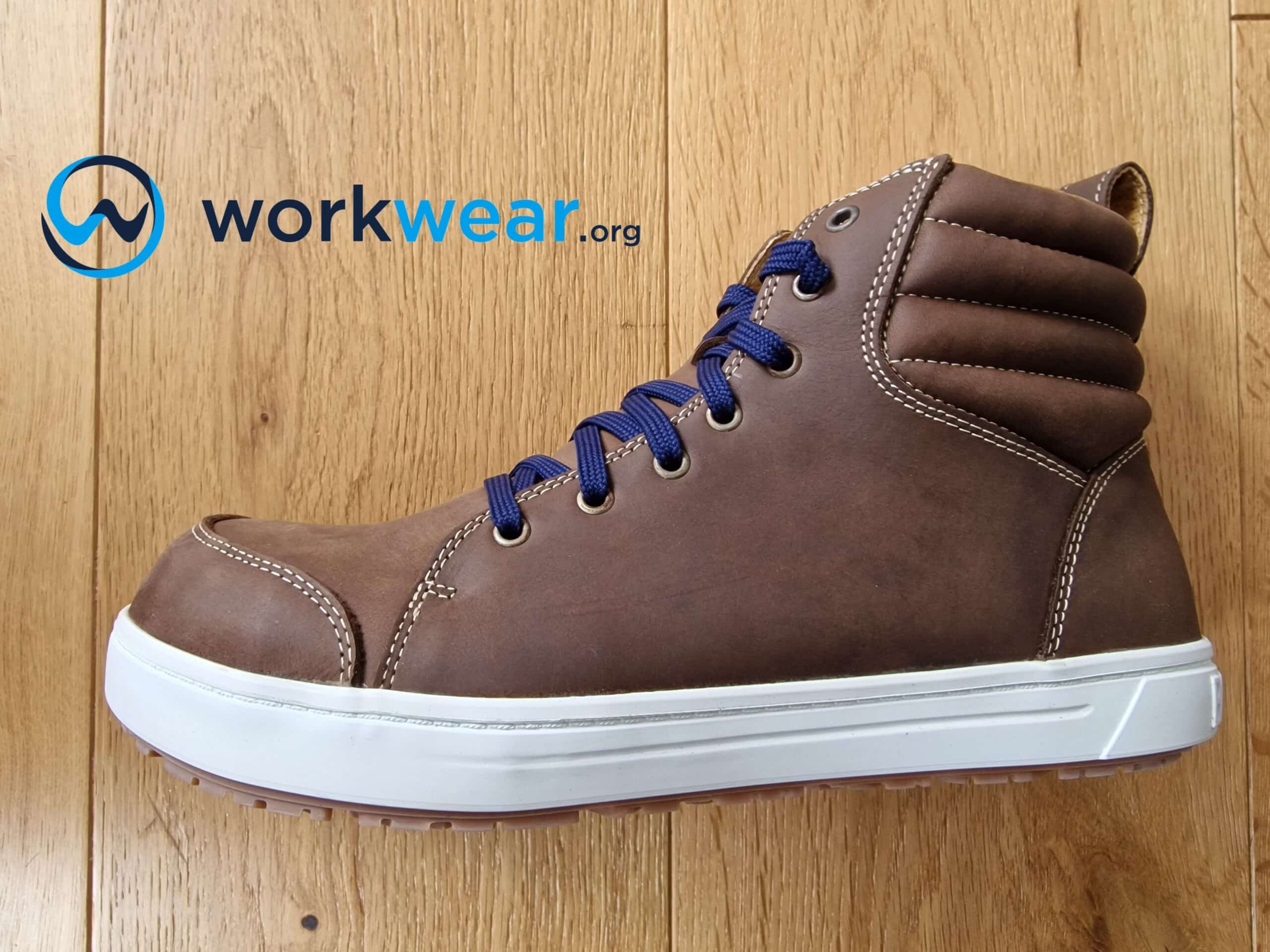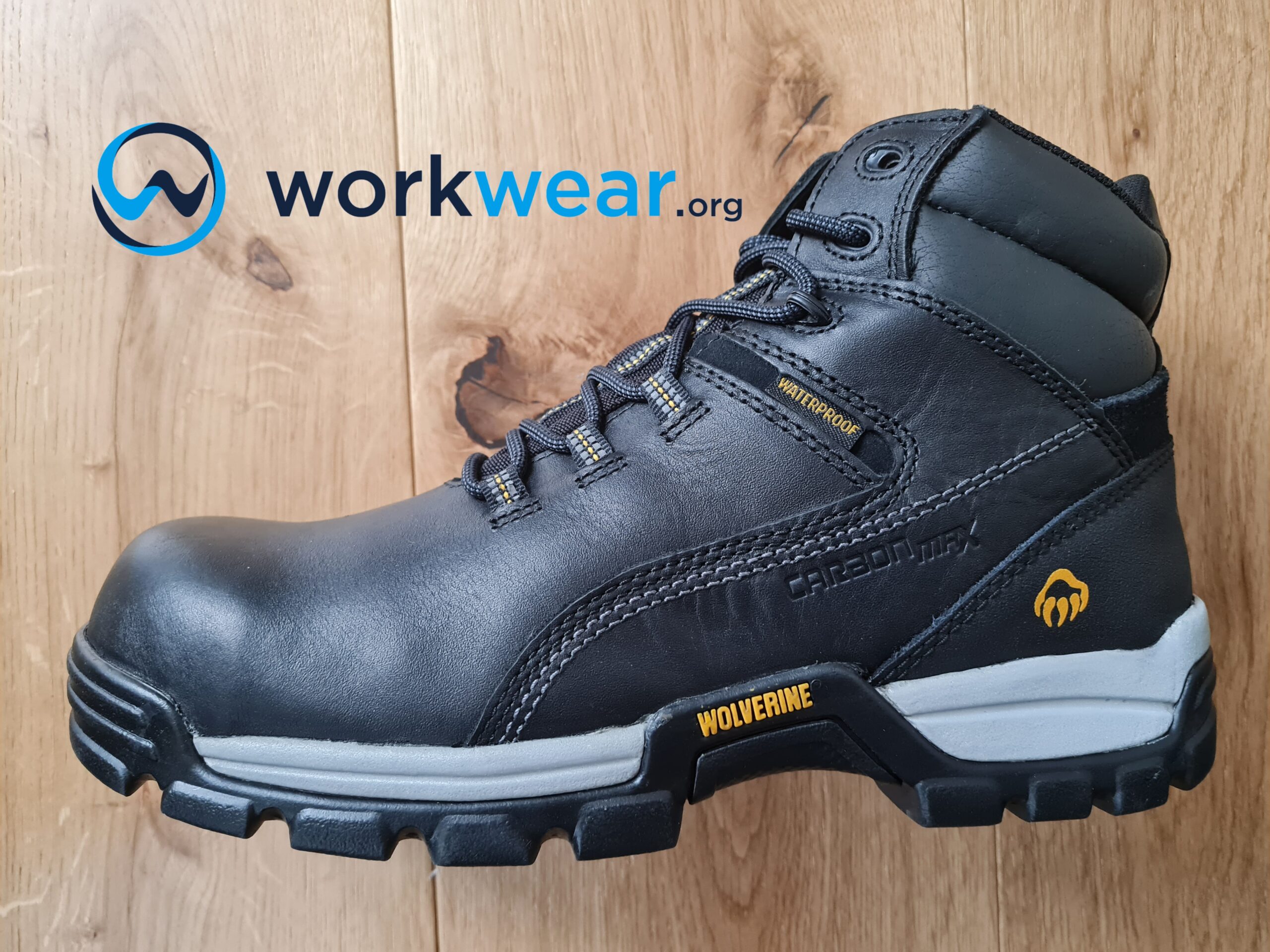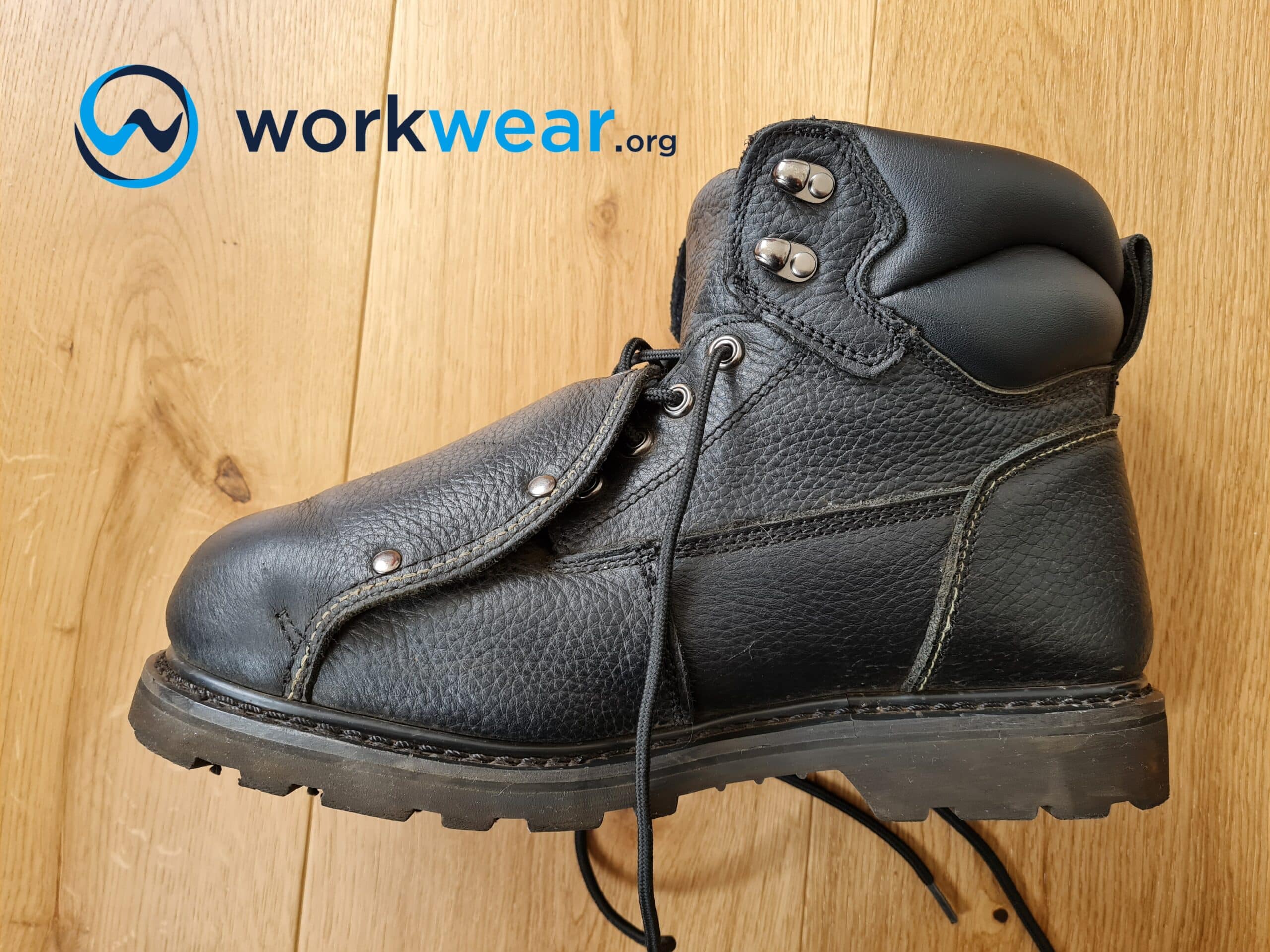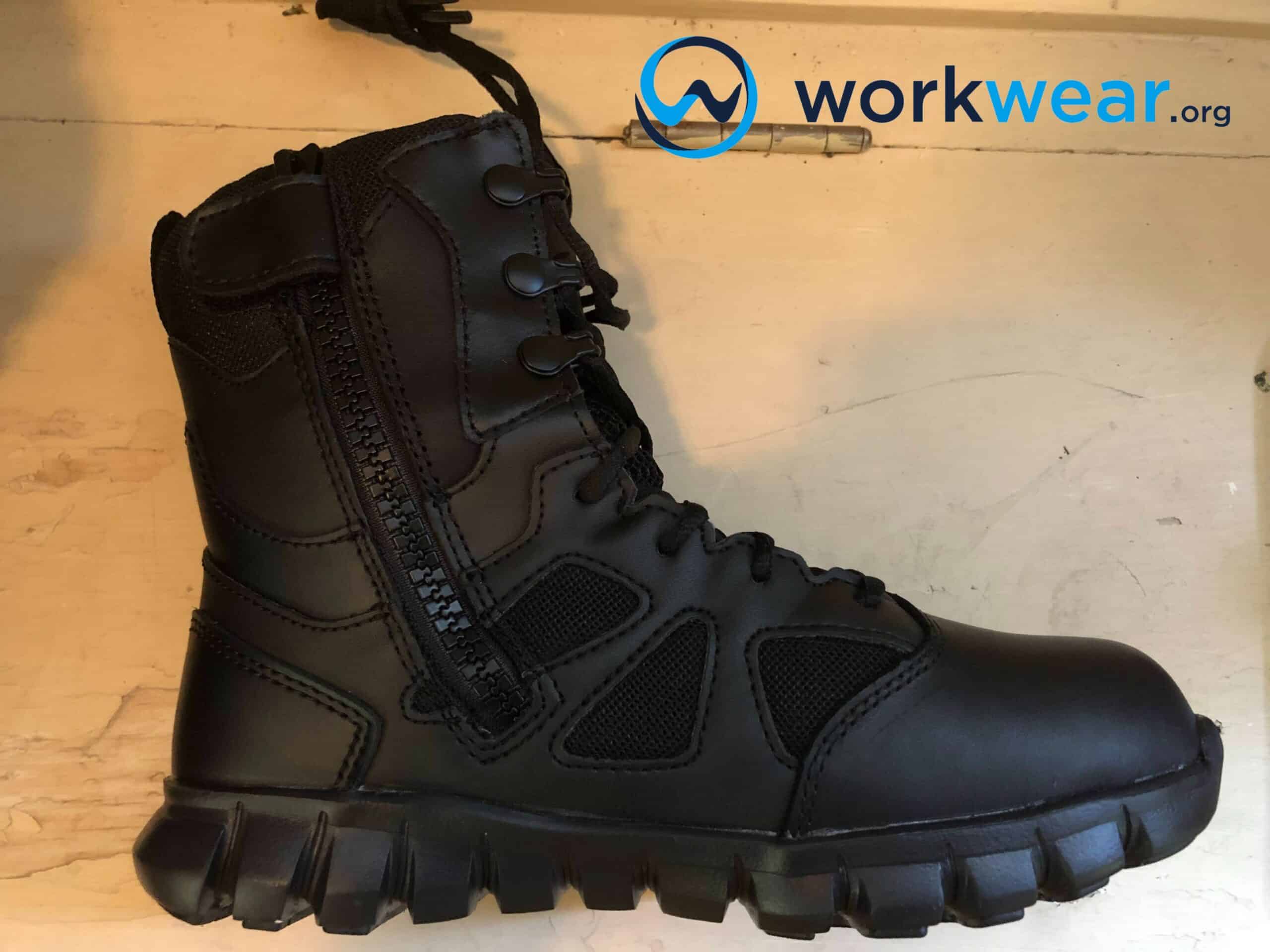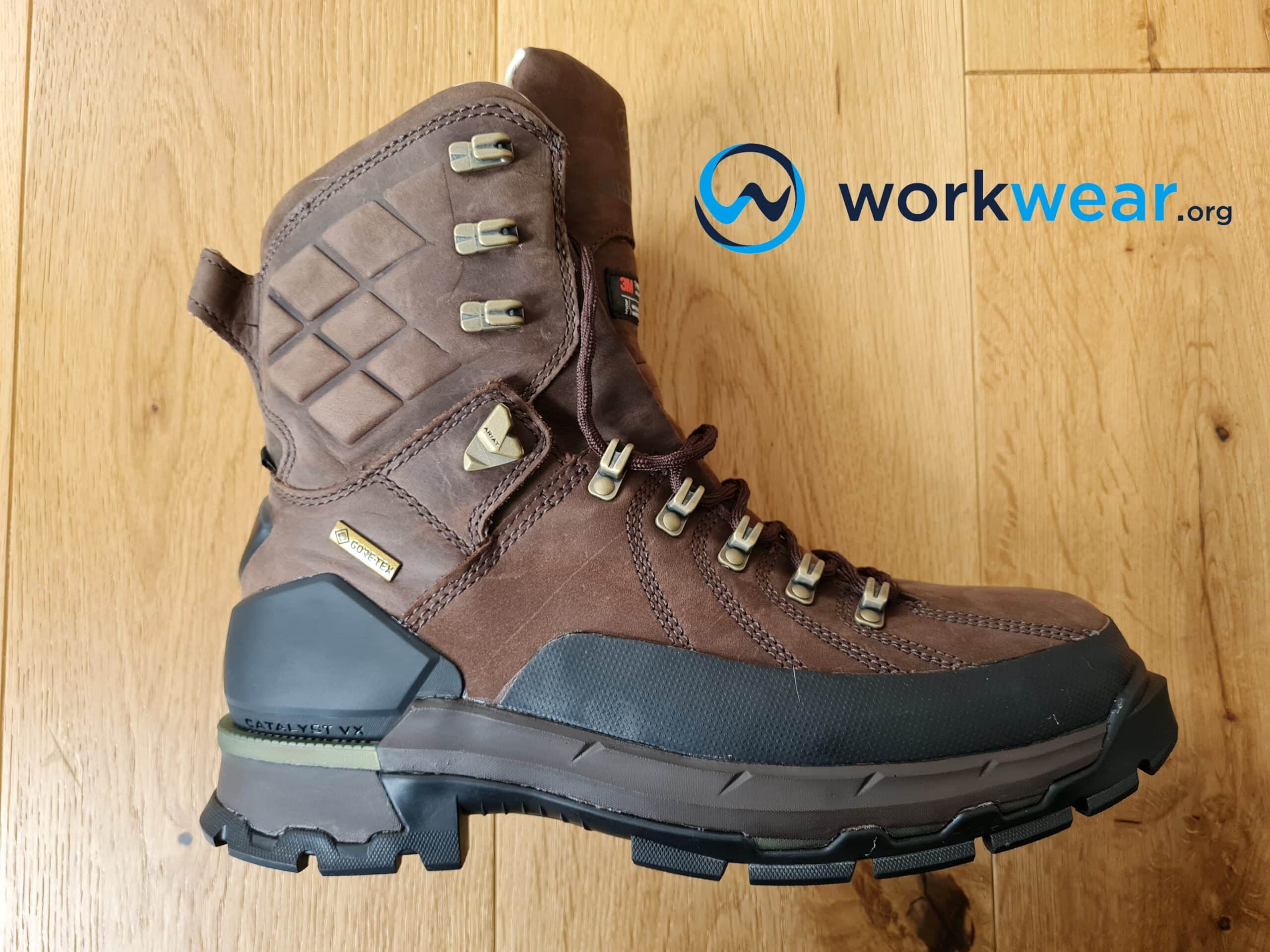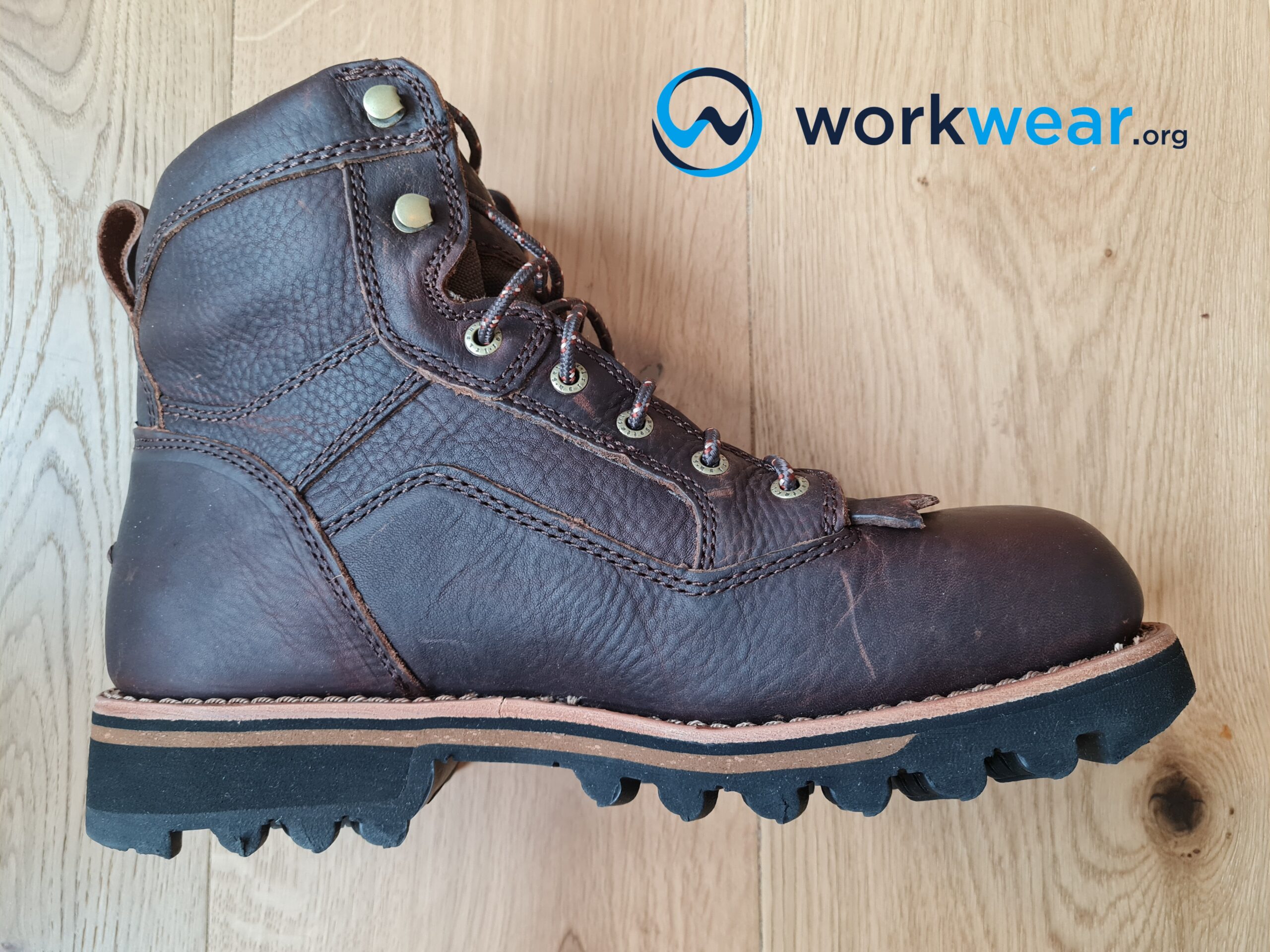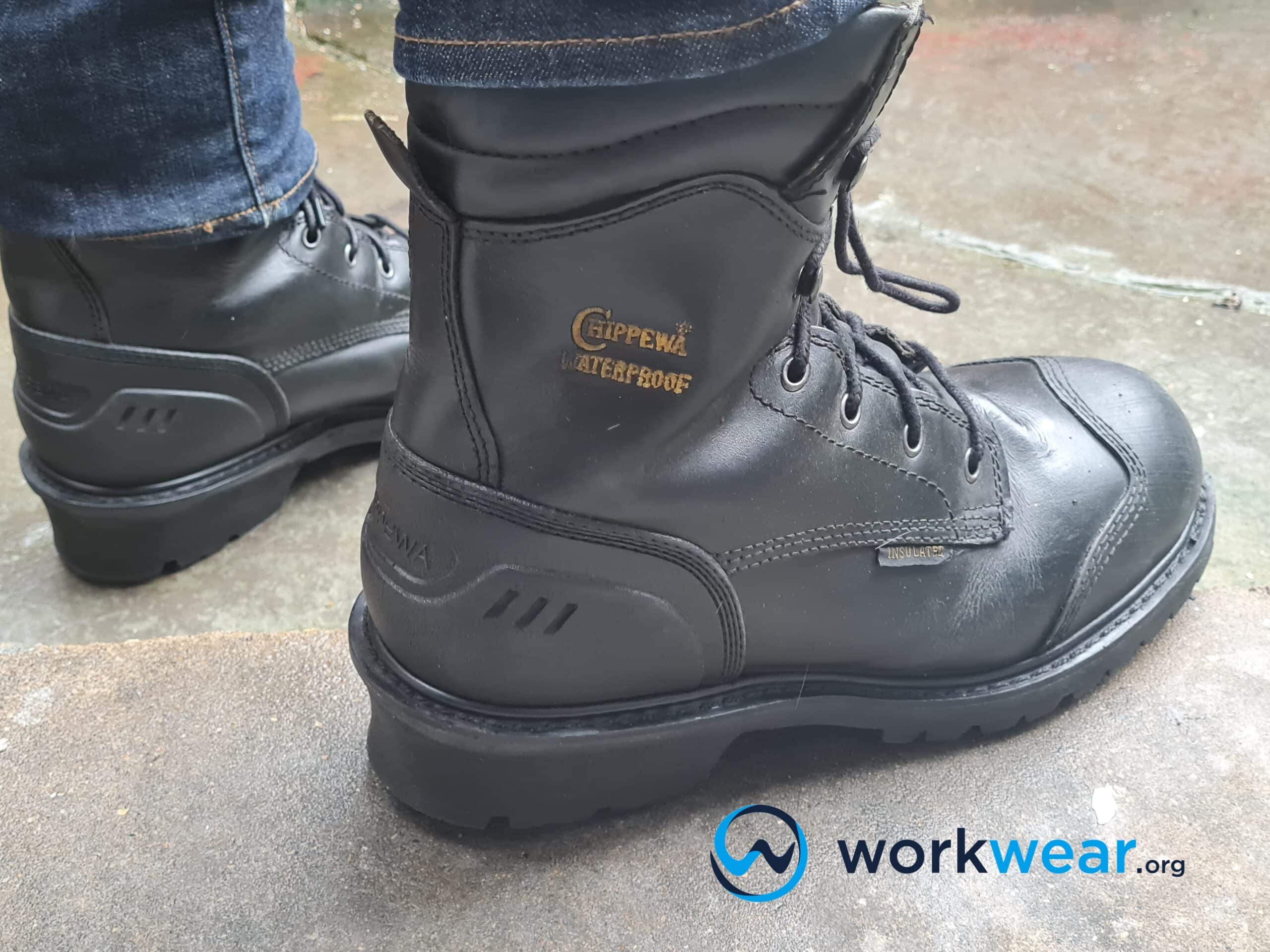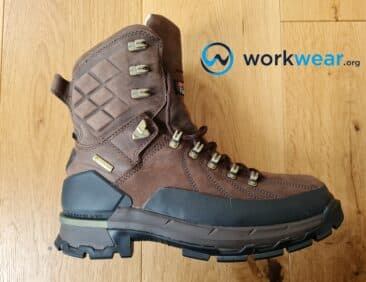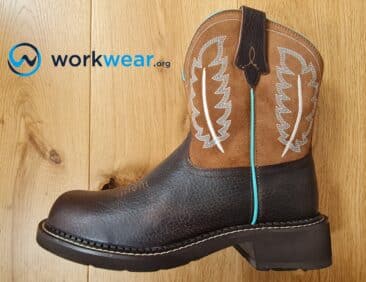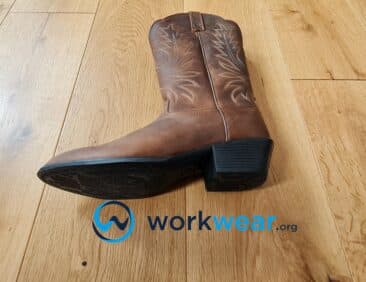Main Types of Work Boots – Demystified and illustrated
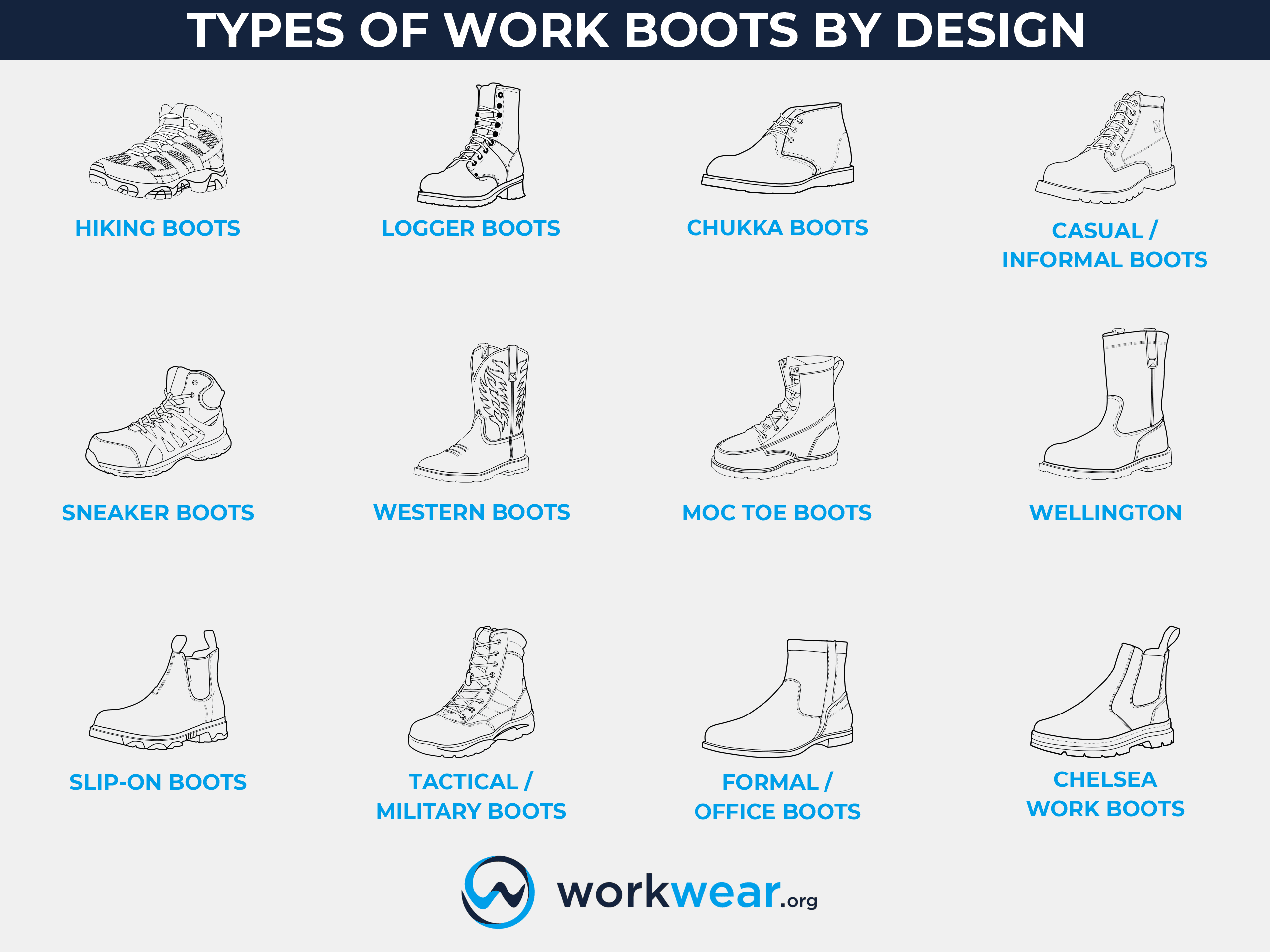
Choosing work boots can be tough, especially given the vast array of footwear available in the market. It’s important to remember the purpose and environment of your boots to ensure that their qualities are maximized. The types of work boots can be divided into several categories – which we’ve rounded up in this article to make it easier for you to search and compare footwear choices. This way, you can more quickly discover the one that perfectly matches your needs and preferences in the workplace.
Types of Work Boots Based on:
A. Design Categorization
One of the main factors for categorizing work boots is based on the design. Aside from the traditional work boot look, work boots’ designs have evolved and are now available in various profiles. It’s now more common to see work boots that are as sporty as basketball sneakers or have the eye-catching silhouette of cowboy boots. While they now come in a much wider array of designs – and not just the old-school look – these work boots are still built to perform remarkably well in different work environments.
1. Hiking
This design almost has a sporty profile, making it more casual compared to a traditional work boot silhouette. It’s usually built with a combination of leather and other materials, resulting in a more lightweight structure than all-leather boots. The flexible construction allows more freedom of movement and promotes increased foot agility in different settings. Work boots with a hiker design, such as the Danner Mountain 600 Boot, offer superior traction and are often fitted with outsoles featuring multidirectional lugs that strongly grip even challenging terrains. In addition, they’re often waterproof to keep the feet dry when working in wet outdoor conditions.
Pros
- Strong traction
- Waterproof or water-resistant
- Lightweight Flexible
- Sporty profile
Cons
- Maybe look too informal for some work settings
- Design isn’t versatile/not for indoor use
Hiking Boots-Professions/Jobs Ideal For
- Delivery personnel
- Farm/ranch workers
- Plumbers
- Light carpentry tasks
- Warehouse staff
- Light manufacturing jobs
2. Logger
Logger boots have heavy-duty structures that perform remarkably well in harsh outdoor environments. These boots, such as the Chippewa Aldarion boot, have tall profiles to protect the feet and calves against abrasion and other hazards that may be encountered while working outdoors. The boots are meant to be laced tightly, keeping the ankle supported so it won’t easily twist when navigating loose soil and other challenging ground conditions. In addition, the design features a raised heel that strongly bites into the ground, ensuring stability while walking on slippery or unstable terrains. The heel also makes a logger boot ideal for riding as they easily maintain their secure position on stirrups. Meanwhile, the outsole has deep lugs that offer powerful traction to prevent slipping on mud, muck, and other slick surfaces.
Pros
- Heavy-duty construction
- Strong traction
- Raised heel
- Waterproof
Cons
- Heavy
- Design isn’t versatile/not for indoor use
Logger Boots-Professions/Jobs Ideal For
- Farmers
- Fence crews
- Ranchers
- Ditch crews
- Linemen
- Construction workers in rural/outdoor sites
3. Chukka
Chukka boots lean towards a more formal look compared to heavy-duty work boots. This makes them more appropriate for formal or casual indoor office settings rather than challenging outdoor surroundings. The streamlined silhouette – such as the one showcased by the Red Wing Heritage Work Chukka – features two pieces of leather stitched together, with the height reaching the ankle. The rounded toe pairs remarkably well with jeans, dress pants, and chinos for an effortlessly stylish look. The roomy boot opening welcomes different foot shapes and allows the ankle to enjoy a wider range of motion. The lace-up design helps with convenient fit modifications to achieve a perfect fit.
Pros
- Stylish, casual profile
- Comfortably wide boot opening
- Lightweight
Cons
- Weak ankle support and traction
- Not for harsh conditions
Chukka Boots-Professions/Jobs Ideal For
- Office workers
- Retail sales staff
- Waiters/dining service staff
- Light carpentry work
- Jobs in business casual settings
4. Sneaker
Work boots with sneaker designs, such as the Timberland PRO Reaxion Boot, almost look and feel like conventional sports footwear. It’s easy to mistake these boots for basketball or running shoes because of their appearance, although they come with enhanced features that offer superior performance in various work sites. They’re often more lightweight than heavy-duty work boots, mainly because of the addition of lighter materials that offer improved comfort even after long hours of use. The sneaker-like feel is further enhanced by comfort features, including generously cushioned interiors and shock absorption. These work boots have a flexible build to support unrestricted mobility on and off the workplace.
Pros
- Sporty look
- Flexible
- Lightweight
- Comfort features (shock absorption, ample cushioning)
Cons
- It may be too casual for formal workplaces
- Not for extremely harsh conditions
Sneaker Boots-Professions/Jobs Ideal For
- Warehouse personnel
- Delivery staff
- Carpenters
- Plumbers
- Kitchen staff
5. Western
Western work boots make work outfits more stylish by injecting Western charm that other work footwear doesn’t have. Depending on the embellishments, these boots (such as the Ariat Dynamic Western Boot) can be a showstopper or a discreetly fashionable addition to daily work attire. The tall boot protects the feet against injuries in case of exposure to abrasion hazards on the job site. Western work boots don’t have laces that can get caught on stirrups and are more convenient to put on and take off since there’s no need to deal with the lacing system with every use. Meanwhile, the raised heel delivers a height boost and protects the Achilles tendon from being strained after hours of standing or walking.
Pros
- Attractive Western style
- Tall height offers extended protection
- Pull-on style for convenient wearing
- The raised heel gives a height boost and prevents foot strain
Cons
- It can heat up quickly (if the design isn’t breathable)
- It may be uncomfortable if the leather is stiff
Western Boots-Professions/Jobs Ideal For
- Cowboys
- Farmers
- Ranch workers
- Office workers (with informal workplace dress codes)
- Landscape workers
- Truck drivers
6. Moc Toe
The stitching distinguishes moc toe work boots on the toe box, resulting in a U-shape instead of a rounded toe. This stitching elevates the toe box and gives the toes more room to wiggle instead of cramped into a tight space. The extra space created improves comfort and increases the boot’s flexibility, making it suitable for jobs that require a lot of walking and kneeling. Instead of pressing too firmly into the toes, the moc toe design allows the boot to flex along with the foot’s motion for superior mobility and comfort. Moc toe boots, such as the Thorogood American Heritage Moc Toe MAXWear Wedge Boot, have a casual style that fits nicely with different outfits in and out of the job site.
Pros
- Roomy toe box
- Flexible and comfortable
- Rugged yet stylish design
Cons
- It may look too rugged/casual for formal office settings
Moc Toe-Professions/Jobs Ideal For
- Construction workers
- Electricians
- Plumbers
- Carpenters
- Food service staff
- Office workers in non-formal office environments
7. Slip-On
Slip-on or pull-on work boots don’t have the usual lace-up system of conventional work boots. These boots can easily be pulled on or off, cutting the time spent on these tasks since there are no laces that need to be managed with every use. They often have a more relaxed fit compared to lace-up boots, allowing the feet to enjoy more mobility while increasing the comfort level by preventing a cramped feeling. Slip-on work boots, such as the Redback Bobcat Chelsea Boot, are built with solid pieces of leather that don’t have perforations or lace eyelets where water can penetrate, providing improved resistance to liquids. The absence of laces makes these boots suitable for work environments with a risk of laces being caught on machinery or other objects. Depending on the model, most pull-on work boots have versatile profiles that fit into worksites and in more laidback surroundings.
Pros
- Convenient to put on and take off
- Generally, have relaxed fit designs for enhanced comfort
- Lace-free structure eliminates the risk of laces getting caught in machinery
- Versatile profile
Cons
- Fit can’t be personalized
- It may feel less supportive/stable compared to lace-up boots (weak ankle support)
Slip-On Boots-Professions/Jobs Ideal For
- Plumbers
- Carpenters
- Farmers
- Sales staff
- Delivery personnel
8. Chelsea
A Chelsea boot is distinguished from other slip-on ankle boots by the presence of side gussets. These elasticized sections automatically stretch with the foot’s entry, so putting the boot on can be managed without pain – which can otherwise come from forcing the foot into a tight boot opening. In addition, it’s common to see pull tabs fitted into the back of Chelsea boots to make them even easier to pull on. This versatile work boot style fits nicely with casual or more formal workwear and is stylish enough to blend in with more laid-back outfits. Chelsea work boots often feature leather construction (such as the Redback Bobcat Chelsea Boots). Still, they can also be made with other materials, including rubber – which is used in the Barbour Nimbus Chelsea Boots.
Pros
- Stylish
- Convenient to put on and remove
- Versatile
- Comfortable
Cons
- Weak ankle support
- Fit isn’t adjustable
Chelsea Boots-Professions/Jobs Ideal For
- Office workers
- Retail sales staff
- Waiters/dining service staff
- Light carpentry work
- Jobs in business casual settings
9. Tactical/Military
Tactical boots are designed to promote agile movements while enduring the tough surroundings encountered while on law enforcement, military, or security duty. They’re built to fit snugly around the ankles to deliver increased walking stability over challenging terrains. These boots usually have tall profiles to protect against environmental abrasion and puncture hazards. Their flexible structures allow a maximum range of motion, keeping the wearer agile and ready to respond quickly to critical situations. With lightweight designs, these boots can be worn for the longest shifts without weighing the feet down with uncomfortable bulk. Tactical boots, such as the Merrell Moab Velocity Waterproof Mid Tactical Boot, are fitted with outsoles with outstanding traction to prevent slipping even on the most unstable or slippery ground conditions.
Pros
- Flexible and lightweight
- Tall height offers extended protection against abrasive or sharp objects
- Reliable ankle support
- Strong traction
Cons
- It may look too casual for formal office settings
Tactical/Military Boots-Professions/Jobs Ideal For
- Law enforcement professionals
- Military service personnel
- Public safety workers
- Security professionals
10. Formal/Office
Work boots with more formal styles are suitable for use in office settings. Their structures are more streamlined and less aggressive than heavy-duty work boots, pairing remarkably well with dress pants to seamlessly match more formal work environments. They’re much lighter than conventional work boots because they have a sleeker profile and aren’t weighed down by safety enhancements or thick outsoles. Office work boots can have lace-up styles, but pull-on designs – such as that showcased by the Clarks Paulson Up Chelsea Boot – work just as nicely in formal workplaces.
Pros
- Lightweight
- Professional silhouette
- Not as bulky or aggressive looking heavy-duty work boots
Cons
- Weak traction
- Nor for outdoor or extreme work conditions
Formal/Office Boots-Professions/Jobs Ideal For
- Retail sales staff
- Hospitality front-of-the-office personnel
- Teaching staff
- Jobs in formal office settings
11. Casual/Informal
These work boots are ideal for more informal work environments. Their casual silhouettes work superbly with jeans and chinos, so maximizing these boots in and out of the work area is easy. Casual work boots don’t have the toughness of heavy-duty work boots but are a bit more rugged than formal office work boots. These boots, such as the Red Wing Heritage Classic Moc Toe Boot, can be used in certain outdoor and non-formal office environments. They’re generally more lightweight and comfortable than bulky work boots but won’t pair nicely with dress pants or formal suits.
Pros
- Versatile – can be used for work and in more relaxed settings
- Ruggedly stylish without being excessively bulky
- Generally, they are lighter and more comfortable than heavy-duty work boots
Cons
- Too casual for suits or strictly formal settings
- Not for hazardous work conditions
Casual/Informal Boots-Professions/Jobs Ideal For
- Sales staff
- Food service workers
- Drivers
- Delivery personnel
- Jobs in non-formal work areas
12. Wellington
Wellington boots have considerably taller structures compared to other work boots. Their heights vary from calf height to knee-high, considered the height of a full-length Wellington boot. It’s normal to think of Wellington boots only as rubber boots with waterproof properties (such as the Muck Boot Arctic Outpost Tall Boot), which is why they’re also referred to as rain boots. However, these boots can also feature other materials, such as the Carhartt Women’s Waterproof 10-Inch Wellington, made with leather and reinforced fabric. Wellington boots come in lace-free, pull-on styles so they can easily be put on.
Pros
- Extended height and coverage
- Increased foot and ankle mobility
- Strong traction
- Often made with waterproof materials
Cons
- Fit can’t be customized
- Can overheat with prolonged use
- Not for indoor use
Wellington Boots-Professions/Jobs Ideal For
- Farmers
- Gardeners
- Ranch workers
- Hygiene & sanitation personnel
Work Boots Types By Design – Comparison Table
| Design |
For What Work Conditions |
|---|---|
| Hiking |
|
| Logger |
|
| Chukka |
|
| Sneaker |
|
| Western |
|
| Moc Toe |
|
| Slip-On |
|
| Chelsea |
|
| Tactical |
|
| Formal/Office |
|
| Casual/Informal |
|
| Wellington |
|
B. Safety Toes Categorization
Safety toes are essential to protect the feet against serious harm in challenging work areas. They act as shields that go over the toes, keeping them safe so they won’t easily get crushed by tools, equipment, or debris that may accidentally drop from elevated spaces. Several types of safety toe caps are built into work boots, improving their ability to keep the feet safe in workplaces with impact and compression risks.
1. Steel Toe
Steel toe caps – fitted into boots such as the Caterpillar Second Shift Steel Toe Work Boot – deliver outstanding protection against impact and compression threats that may drop from elevated positions in the work area. They’re considered stronger than other safety toes, so they’re the most preferred option for safety boots used for extremely hazardous conditions. Generally, they’re more affordable than other safety toes – but the boots’ prices can be affected by different factors, such as other safety enhancements. They can set off metal sensors and feel too heavy when the boots are used for long periods.
Pros
- Maximum protection against injuries from falling or rolling objects
- Suitable for hazardous worksites
- Generally, costs are lower than other safety toe materials
Cons
- Conducts heat and electricity
- Can accidentally trigger metal detectors
- It may feel too heavy after hours of boot use
- The toe box may feel too small or cramped
Steel Toe Boots-Professions/Jobs Ideal For
- Construction workers
- Heavy machinery operators
- Loggers
- Manufacturing personnel
- Warehouse staff
- Disaster relief workers
2. Composite Toe
Composite toe caps are built using non-metallic materials, such as carbon fiber or Kevlar. They protect the feet against dangerous impact and compression, although their resistance isn’t considered as strong as that of steel toes. The non-metallic materials weigh less than steel, resulting in more lightweight work boots that are more comfortable for all-day walking or standing. Composite toes like those fitted into the Timberland Hypercharge Composite Toe Boot aren’t as thick as steel, so there’s more room in the toe box to accommodate comfortable toe wiggling. Since they don’t have metal components, composite toe safety boots won’t unintentionally set off metal detectors.
Pros
- More lightweight than steel toe caps
- Thinner – doesn’t make the toe box feel too cramped
- It doesn’t conduct electricity or heat
- Won’t trigger metal sensors
Cons
- Not as strong as steel toe caps
- Generally, more expensive than steel safety toes
Composite Toe Boots-Professions/Jobs Ideal For
- Electricians
- Electrical engineers
- Plumbers
- Security personnel
- Linemen
- Airport personnel
3. Alloy toe
Alloy toe caps are usually constructed with aluminum alloy, but they can also be made from different materials such as titanium or copper. They’re thinner than steel toe caps, so the boots’ toe box is left with enough room to allow the toes to move comfortably. Typically, alloy toes (like the ones in the Timberland PRO Titan 6-Inch Alloy Toe Work Boot) are up to 50% more lightweight than steel toe caps, so they don’t push heavily and painfully on the toes even after long hours of boot use. However, since they’re still made of metal, they have the same disadvantages as steel toe caps, such as heat and electricity conduction.
Pros
- Lighter than steel safety toes
- It doesn’t make the toe box too cramped
- Thinner than steel toe enhancements
Cons
- Conducts heat and electricity
- Can accidentally trigger metal sensors
- More expensive than steel toe caps
Alloy toe Boots-Professions/Jobs Ideal For
- Construction workers
- Farmers
- Delivery personnel
- Warehouse staff
4. Soft toe
Soft toe work boots don’t have safety toe caps in place. They don’t provide strong protection from injuries that may result from exposure to dangerous compression and impact. However, some soft toe work boots (such as the Ariat Catalyst VX Defiant Gore-Tex Insulated Boot) are fitted with reinforcements (such as rubber toe overlays) that can provide extra protection against abrasion and falling objects. Without safety toe caps in place, soft toe boots maintain lightweight profiles that don’t cause foot discomfort even after continuous boot-wearing for hours. In general, soft toe work boots’ toe boxes are roomier and allow unrestricted toe movement for enhanced foot comfort. These boots are also more flexible as they don’t have a metallic or composite cap on the toe box that can restrict natural foot movement.
Pros
- The comfortably roomy toe box
- Weighs less than safety toe work boots
- More flexible upper for unhampered mobility
Cons
- No/weak protection against injuries from impact and compression threats
- Not suitable for hazardous job sites
Soft toe Boots-Professions/Jobs Ideal For
- Sales staff
- Food service staff
- Kitchen staff
- Drivers
- Office workers
Work Boot Types by Safety Toes – Comparison Table
| Safety Toes |
For What Work Conditions |
|---|---|
| Steel Toe |
|
| Composite Toe |
|
| Alloy Toe |
|
| Soft Toe |
|
C. Upper Material Categorization
The material used for a work boot’s upper affects its appearance, but it also impacts its performance. Work boots with the right upper material will fit well into the worksite’s atmosphere and workwear. They also deliver the right level of protection and comfort appropriate to the job environment, making walking more comfortable without compromising safety and style.
1. Genuine Leather
Genuine leather is the most common material for work boots and offers multiple aesthetic and performance benefits. High-quality leather creates a durable upper that can withstand heavy use for different activities. It has a natural resistance to moisture and may even be enhanced with a waterproof coating for enhanced protection against liquid penetration. The suppleness of leather elevates the aesthetics of work boots, giving them an elegant touch that other materials can’t. Some leather types are designed to mold to the foot’s shape, delivering a customized fit that only gets better with more frequent use. Leather boots have versatile profiles, so they often fit in easily with workwear and in more laidback environments. Once completely broken in, leather work boots become flexible and easily support comfortable walking.
Pros
- Supple texture
- Molds to the foot’s shape
- Durable
- Natural resistance to liquids
- Flexible
Cons
- Thick leather can be heavy and overly warm
- Top-quality leather is often pricey
- It can be difficult to maintain
Genuine Leather Boots-Professions/Jobs Ideal For
- Construction workers
- Food service staff
- Electricians
- Retail sales staff
- Office workers in formal settings
2. Pleather/Vegan Leather
Also referred to as artificial leather, pleather mimics the look of genuine leather but is made of synthetic material. Instead of animal skins, vegan leather is made by combining PU or PVC with fabric material and is a cost-effective alternative to real leather, making it a popular material choice for those looking for inexpensive work boots. It’s also preferred by vegans, vegetarians, and those who want the benefits of wearing good quality work boots while promoting the prevention of animal cruelty. Artificial leather requires minimal maintenance compared to the real thing, so the appearance and function of pleather work boots won’t change drastically even without meticulous care. Many synthetic leather work boots are waterproof or at least offer some form of water resistance, making them suitable for jobs in wet environments without the high price tag.
Pros
- More affordable than genuine leather
- Low maintenance
- Versatile use
- Most are waterproof/water resistant
- Animal cruelty-free
Cons
- Not as durable as leather
- Not breathable
- It doesn’t conform to the foot’s shape
Pleather/Vegan Leather Boots-Professions/Jobs Ideal For
- Plumbers
- Construction workers
- Food service staff
- Retail sales personnel
- Office workers
3. Rubber
Rubber is naturally waterproof, making it a fantastic choice for work boots used in exceptionally wet conditions. Tall rubber boots block liquids and won’t easily allow them to splash in through the high opening, so feet will stay dry even when wading in deep mud or water puddles. Rubber has high wear resistance, so it doesn’t break apart easily even with extensive use for demanding tasks. It offers superior protection against abrasives and other safety hazards in the environment, with some types providing safety against chemicals and other harsh substances. Rubber work boots are flexible and won’t normally hamper movements, making walking and moving around easier. Their soles often come with high-traction lugs that strongly grip the ground for superior slip prevention.
Pros
- Waterproof
- Superior protection against safety hazards
- Strong traction
- Easy to clean
- Strong and durable
Cons
- Fit can’t be adjusted
- Not breathable – can overheat after hours of use
- Weak ankle support
Rubber Boots-Professions/Jobs Ideal For
- Maintenance/hygiene personnel
- Farmers
- Ranch workers
- Fishermen
- Food processing personnel
- Oil & gas industry workers
Work Boot Types by Upper Material – Comparison Table
| Upper |
For What Work Conditions |
|---|---|
| Genuine Leather |
|
| Pleather/Vegan Leather |
|
| Rubber |
|
D. Lacing Categorization
A work boot’s lacing system can dictate how well the footwear will stay secured while dealing with different activities and scenarios. This aspect may not be the top one to be considered when choosing work boots, but it plays a key role in the footwear’s comfort and stability. The lacing system also impacts boot-wearing convenience, especially for those whose jobs and activities require fast boot on and off.
1. Laces
The standard lacing system is used in most work boot types. It gives work boots a classic look that goes well with different job settings. Laces enable the boot’s fit to be personalized as they can be tightened or loosened to achieve a comfortable feeling that doesn’t compromise walking stability. If the laces feel uncomfortably tight or too loose throughout the day, it’s easy to remedy the problem by readjusting their laces. Depending on the purpose or activity, there are several lacing methods for securing the boots, such as the heel lock method for logger boots and the army lacing technique for tactical boots. Strong laces, such as the ones made with woven nylon or Kevlar, keep up with tough environments and activities without breaking apart easily.
Pros
- Classic aesthetic
- Uncomplicated use
- Promotes a secure fit
- It can easily be adjusted
Cons
- It may take too long to tie up/untie
- Laces can get caught in objects and cause tripping
- Laces need to be changed periodically
Lacing Boots-Professions/Jobs Ideal For
- Construction workers
- Carpenters
- Electricians
- Workers in formal office settings
- Military/law enforcement personnel
2. BOA
BOA is a proprietary lacing system that uses a dial and stainless-steel wires to loosen or tighten the work boot quickly. By turning the knob, this system allows tiny adjustments so that the boot’s fit can be customized more easily without spending a lot of time tying or untying laces. It also has a quick-release function that allows the boot to be completely loosened by turning the dial-up. The system was originally developed for the sports industry but has since been used progressively for work boots and personal protective equipment. It promotes a secure fit as it locks the heel, improving stability without restricting agility in the process. This system eliminates the risk of loose laces that can get caught in surrounding objects, preventing tripping accidents in the workplace. In addition, it’s guaranteed to keep up with freezing temperatures, sweat, and rain encountered in tough outdoor settings. The BOA dial is designed for convenient handling even with gloved hands and repels oils, sand, and mud.
Pros
- Quick boot tightening or loosening
- No loose laces that can cause tripping
- Locks the heel in place for improved stability
- BOA knob can be controlled even with gloved hands
Cons
- Expensive
- Tightening/fit on specific points can’t be controlled
BOA Boots-Professions/Jobs Ideal For
- Hunters
- Firemen
- Miners
- Construction workers
- Oil & gas industry workers
3. Laces with Zipper
Work boots with laces and a side zip offer increased convenience without sacrificing fit security. The zipper enhancement allows the boots to be put on and taken off more quickly compared to fiddling with the entire lacing system with every use. This makes the boots ideal for first responders and other professionals who may need to get into and out of the footwear the fastest way possible. Meanwhile, the laces enable fit personalization, ensuring that the boots already have a perfectly secure fit and will only need to be pulled on and off with the help of the side zip for superior convenience. Finally, the combination of laces and a zipper on the side (such as that featured on the Bates GX-8 Side-Zip Gore-Tex Boot) make it easier to enjoy a comfortable fit, with the ankle secured in place to prevent twisting when navigating challenging ground conditions.
Pros
- More convenient to put on and take off
- Holds the ankle in a secure position
- Fit can be customized for comfort and stability
Cons
- Damage to the zipper can compromise the entire boot’s function
- Water and other liquids can seep in through the zipper
Laces with Zipper Boots-Professions/Jobs Ideal For
- Law enforcement personnel
- Firefighters
- Emergency first responders
- Farmers
- Industrial workers
Work Boot Types by Lacing – Comparison Table
| Lacing |
For What Work Conditions |
|---|---|
| Laces |
|
| BOA |
|
| Laces with Zipper |
|
E. Protective Sole Categorization
Aside from supporting the feet, work boots’ soles can also come with different qualities that improve safety on the job site. These enhancements make the work boot more resistant to workplace hazards (such as electrocution or slipping risks and harsh substances), enabling the wearer to confidently continue walking and doing the job without worrying in challenging conditions.
1. Slip-resistant
Slip-resistant soles are made with high-traction materials (such as TPU, rubber, or Vibram) that strongly grip the ground. This quality promotes more stable walking as the boots are firmly planted on the ground, so it’s easier to maintain a balanced gait even on slippery or unstable surfaces. In addition, anti-slip outsoles often have pronounced treads that help increase the boots’ stability, strongly maintaining contact with the surfaces that need to be navigated to prevent slipping accidents. Rubber is the most common material used for slip-resistant soles. However, some manufacturers have developed slip-resistant outsoles for their products – such as the Columbia Omni-Grip sole featured in the Newton Ridge Plus II Boot.
Pros
- Strong traction
- Promotes stability on different surfaces
Cons
- Can be heavy
- Typically, they are more expensive than regular soles
Slip-resistant Boots-Professions/Jobs Ideal For
- Farmers
- Firefighters
- Law enforcement personnel
- Construction workers
- Plumbers
2. Electrical Hazard Protection
Work boots with electrical hazard protection provide a secondary source of protection against being electrocuted in case of accidental exposure to open circuits or electrically energized objects. The heels and soles of work boots such as the Timberland PRO Titan 6-Inch Alloy Toe Work Boot are built to prevent the electrical charge from passing through the body by keeping the feet isolated from the ground. Electrical hazard-safe work boots are recommended for jobs that may involve the risk of exposure to live electrical circuits, such as electricians and linemen.
Pros
- Offers superior protection against electrocution in dry conditions
Cons
- Protection can be compromised in wet conditions
Electrical Hazard Protection Boots-Professions/Jobs Ideal For
- Electricians
- Construction workers
- Plumbers
- Linemen
- Engineers
3. Anti-Static
Work boots with anti-static outsoles (such as the Dickies Medway Boot) protect against the accumulation of static electricity that may cause sparks, which may, in turn, result in explosions when there’s contact with flammable materials on the job site. The soles effectively discharge static electricity to the ground, promoting a safer environment in locations that have risks of static electricity building up.
Pros
- It prevents sparks caused by static electricity build-up
Cons
- Can make the work boot expensive
- Anti-static properties may interfere with equipment and produce false readings
Anti-Static Boots-Professions/Jobs Ideal For
- Electricians
- Electronics manufacturing workers
- Computer parts manufacturing personnel
- Laboratory staff
4. Oil Resistant
Oil-resistant outsoles are constructed to maintain their structural strength after exposure to oil. They won’t disintegrate when used on oily surfaces, unlike regular outsoles (without oil resistance) that can easily break apart with this type of exposure. Oil-resistant soles, like the one built into the Redback Bobcat Chelsea Boot, also work by preventing oil from penetrating the boots, protecting the interior from damage by the harsh substance while keeping the feet safe from harm. These outsoles grip the ground firmly to promote a stable, much safer walking experience.
Pros
- It remains durable even with exposure to oil
- Strong grip
- Stops oil from seeping in
Cons
- It may be heavier and less flexible than other sole types
- Can make the work boot more expensive
Oil Resistant Boots-Professions/Jobs Ideal For
- Oil & gas industry workers
- Auto mechanics
- Engineers
- Heavy machinery operators
5. Chemical/Acid Resistant
Chemical-resistant outsoles protect the feet from burns, blisters, infections, and other adverse reactions that may result from exposure to chemicals and acids. They work by forming a barrier to prevent hazardous elements from penetrating the boots. The material is designed to withstand being used with frequent exposure to harsh substances in different work settings without disintegrating in the process, so they can continue providing enhanced protection for a longer period of time.
Pros
- Keeps the feet safe from harmful substances
- Maintains structural strength after exposure to chemicals and acids
Cons
- Generally, more expensive than regular outsoles
- It may not be as flexible as other sole types
Chemical/Acid Resistant Boots-Professions/Jobs Ideal For
- Farmers
- Emergency responders
- Ranch workers
- Chemical plant workers
- Hazardous material cleanup personnel
6. Heat Resistant
Heat-resistant outsoles protect the feet from being burned or injured when walking on extremely hot surfaces. Work boots with this type of outsole protection, such as the Puma Safety Conquest Composite Toe Boot, are recommended for those who work in high-temperature conditions, such as those working on asphalt road paving. Aside from keeping the feet safe from serious injuries, heat-resistant outsoles also help preserve the work boots’ structural integrity by resisting deterioration when exposed to extremely high temperatures.
Pros
- It protects the feet from serious injuries caused by extremely hot surfaces
- It prevents material deterioration after exposure to high-temperature conditions
Cons
- Can increase the work boot’s price
Heat Resistant Boots-Professions/Jobs Ideal For
- Firefighters
- Oil & gas industry workers
- Welders
- Auto mechanics
- Road construction workers
7. Puncture Resistant
Puncture-resistant outsoles are built to stop sharp objects (such as protruding nails or pieces of jagged metal) from penetrating the bottom of the work boot. These soles are constructed with a metallic or composite plate that acts as a shield, ensuring that puncture hazards that may accidentally be stepped on won’t pierce the boots (and the feet) so that serious injuries can be prevented. Work boots with penetration-resistant plates (such as the Caterpillar Pelton Boot) are suitable for job locations where there are risks of sharp objects being left lying around, such as construction sites. The protective plate is often fitted into the midsole (between the footbed and outsole) to block the entry of sharp items.
Pros
- It prevents serious foot piercing injuries
Cons
- The puncture-resistant plate can make the boot heavy
- It costs more than boots without this safety enhancement
Puncture Resistant Boots-Professions/Jobs Ideal For
- Construction workers
- Auto mechanics
- Landscape workers
- Emergency responders
- Loggers
Work Boot Types by Protective Soles – Comparison Table
| Protective Sole |
For What Work Conditions |
|---|---|
| Slip Resistant |
|
| Electrical Hazard Protection |
|
| Anti-Static |
|
| Oil Resistant |
|
| Chemical/Acid Resistant |
|
| Heat Resistant |
|
| Puncture Resistant |
|
F. Type of Protection Categorization
Protective features make work boots appropriate for harsh conditions or worksites with exposure to various safety threats. They’re built into the boots’ structure to keep the feet safe and can also increase the comfort level without sacrificing mobility and productivity on the job. Therefore, it’s important to determine what safety hazards can be encountered in the work area, as this can help ensure that the chosen work boots will have equivalent protection in place.
1. Safety Toes
Safety toes are built into work boots to deliver continuous protection against accidentally falling objects. These enhancements keep the toes safe from grave crushing injuries in case heavy objects roll or drop onto the boot in harsh work environments. Safety toe caps can be made of metal (such as steel or aluminum alloy) or non-metallic materials (such as carbon fiber or Kevlar and are fitted into the toe box, guarding the toes so they won’t be seriously harmed by compression and impact threats. Steel toe caps deliver maximum protection against crushing impact but tend to be heavy and conduct heat and electricity. Meanwhile, composite toe caps are more lightweight and trigger metal detectors – but their level of protection may not be as strong as steel.
Pros
- It prevents serious toe/foot injuries that heavy falling objects can cause
- It makes it safer to walk and work in hazardous job conditions
Cons
- It makes work boots more expensive
- Can make the boots heavy and bulky
Safety Toes Boots-Professions/Jobs Ideal For
- Construction workers
- Emergency responders
- Loggers
- Farmers
- Jobs that are exposed to impact and compression hazards
2. Metatarsal Protection
Work boots with metatarsal guards – such as the Iron Age Groundbreaker Boot – protect the toes and the top of the foot against dangerous compression and impact. This type of protection can prevent critical foot injuries in work settings where there are risks of objects – such as concrete blocks or heavy equipment – accidentally falling onto the boot. Met guards are made from metallic (such as steel or aluminum) or non-metallic materials (such as composite plates) placed over the foot’s metatarsal area. They can be internal or external, depending on where they’re located. Internal met guards are preferred by those who don’t want the extremely bulky look of external met guards, which also tend to get caught on objects in the surrounding area. However, depending on how they’re built, internal met guards may cause discomfort if they press directly against the feet inside the boots.
Pros
- Provides extra protection against dangerous impact and compression
- Guards the top of the foot (not only the toes) against crushing injuries
Cons
- Makes boots heavier
- Increases the boots’ price
Metatarsal Protection Boots-Professions/Jobs Ideal For
- Loggers
- Heavy equipment operators
- Oil & gas industry personnel
- Construction workers
- Manufacturing industry workers
3. Waterproof
Waterproof work boots protect the feet against getting soaked in wet job sites. They’re enhanced with waterproof materials (such as waterproof coating or a waterproof bootie) that seal out mud, water, spilled ingredients, melted snow, and other liquid substances so they won’t have a chance to seep in. Aside from protecting keeping the feet safe from becoming uncomfortably wet, waterproof components also help maintain the boots’ structural strength by preventing damage caused by liquid penetration or excessive wetness. Waterproof work boots are ideal for outdoor settings, especially when working on muddy ground or in the rain. They’re also suitable for jobs that are done indoors but have risks of accidental exposure to wet elements, such as plumbers.
Pros
- It protects the feet from getting soaked in wet settings
- It prevents work boot damage by stopping wet elements from getting in
Cons
- Generally, they are more expensive than non-waterproof boots (especially when exclusive technology such as GORE-TEX is used)
Waterproof Boots-Professions/Jobs Ideal For
- Farmers
- Plumbers
- Loggers
- Industrial plant workers
- Hunters
4. Insulated
Insulated work boots are designed to keep the feet warm in cold surroundings, preventing an uncomfortably chilled feeling that can negatively affect mobility and productivity in the workplace. Different insulation materials are used for work boots, with 3M Thinsulate Ultra being one of the most popular options nowadays because of its reliable temperature regulation and low-profile structure. Meanwhile, other work boots are kept warm by fitting in a layer of wool inside to trap heat and keep the feet warm in low-temperature settings. Other cold-weather footwear, such as the Muck Boot Arctic Outpost Tall Boot, uses a combination of fleece and neoprene lining for heat retention and superior comfort while working on cold job sites. Most insulated boots are also waterproof, providing superior protection and comfort while tackling outdoor tasks in extreme weather conditions.
Pros
- Keeps the feet comfortably warm in cold conditions
- It stops cold air from getting into the boots
Cons
- Can add significant weight to the boots (except for Thinsulate Ultra insulation)
- It makes work boots pricier
Insulated Boots-Professions/Jobs Ideal For
- Farmers (cold weather settings)
- Loggers (during winter)
- Ranch workers (when it’s snowing)
- Law enforcement officers (in low-temperature conditions)
5. Cut Resistant
Cut-resistant boots are equipped with special inlay components designed to significantly reduce the risk of being cut by blades and other sharp objects. The protective inlay is fitted on the top portion of the boot to deliver superior cut protection, especially when using a chainsaw for cutting materials. Also called chainsaw boots, cut-resistant work boots use puncture-retardant materials such as ballistic nylon or Kevlar that may stop the chainsaw from piercing the boot or may resist the cutting process for a short period.
Pros
- Delivers strong cut resistance against chainsaw and other cut/puncture hazards
Cons
- Heavy
- Expensive
Cut Resistant Boots-Professions/Jobs Ideal For
- Loggers
- Arborists/Tree & shrub care professionals
- Rangers
- Chainsaw operators
6. Flame Resistant
Flame-resistant work boots are constructed to deliver maximum protection for professionals exposed to fire in their line of work. These boots will not ignite or melt with exposure to fire and are designed to extinguish the flame within two seconds of contact. They’re also built to resist extremely hot conditions without the material melting or becoming degraded. Even the stitches used in these boots are fire-resistant to ensure that they won’t catch fire and can extinguish the flame before it can spread.
Pros
- It prevents boot damage with exposure to flames
- It protects the feet against burns
Cons
- More expensive than regular safety work boots
Flame Resistant Boots-Professions/Jobs Ideal For
- Firefighters
- Emergency responders
Work Boot Types by Safety Protection – Comparison Table
| Type of Protection |
For What Work Conditions |
|---|---|
| Safety Toes |
|
| Metatarsal Protection |
|
| Waterproof |
|
| Insulated |
|
| Cut Resistant |
|
| Flame Resistant |
|
Conclusion
Finding the best work boots can be tough, but the task gets easier when you’re armed with the necessary information. By reading through the categories you may encounter when choosing work boots, you’ll have a clearer idea of what each work boot type can offer in terms of strong points – and which drawbacks can be expected with specific choices. The selection process will also be easier and more fruitful as you discover which categories provide you with the most benefits, considering your workplace requirements and personal preferences when choosing the perfect work boot.
678+
Products Reviewed
24+ Years
Combined Experience
500+ Hrs
Field Testing
